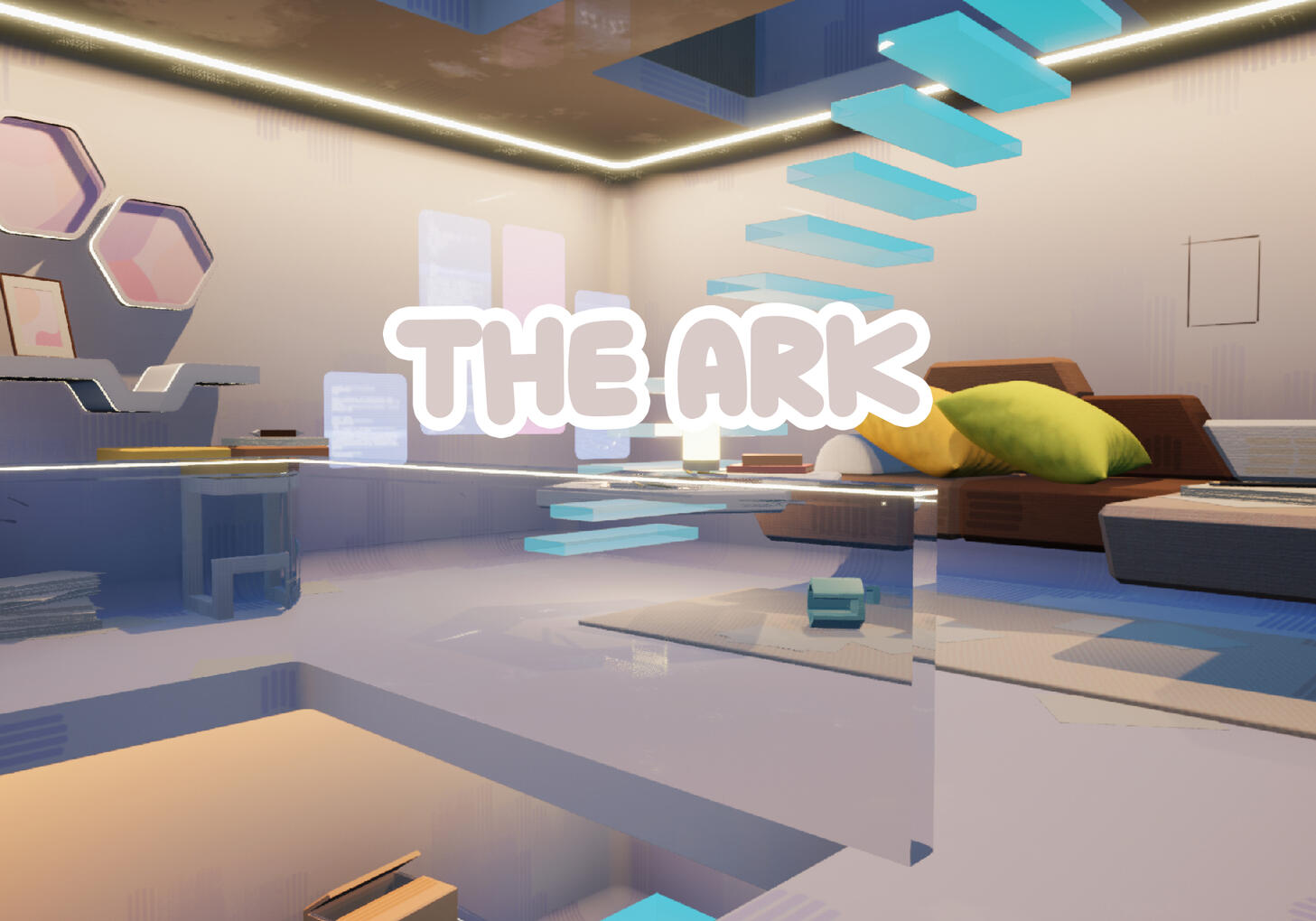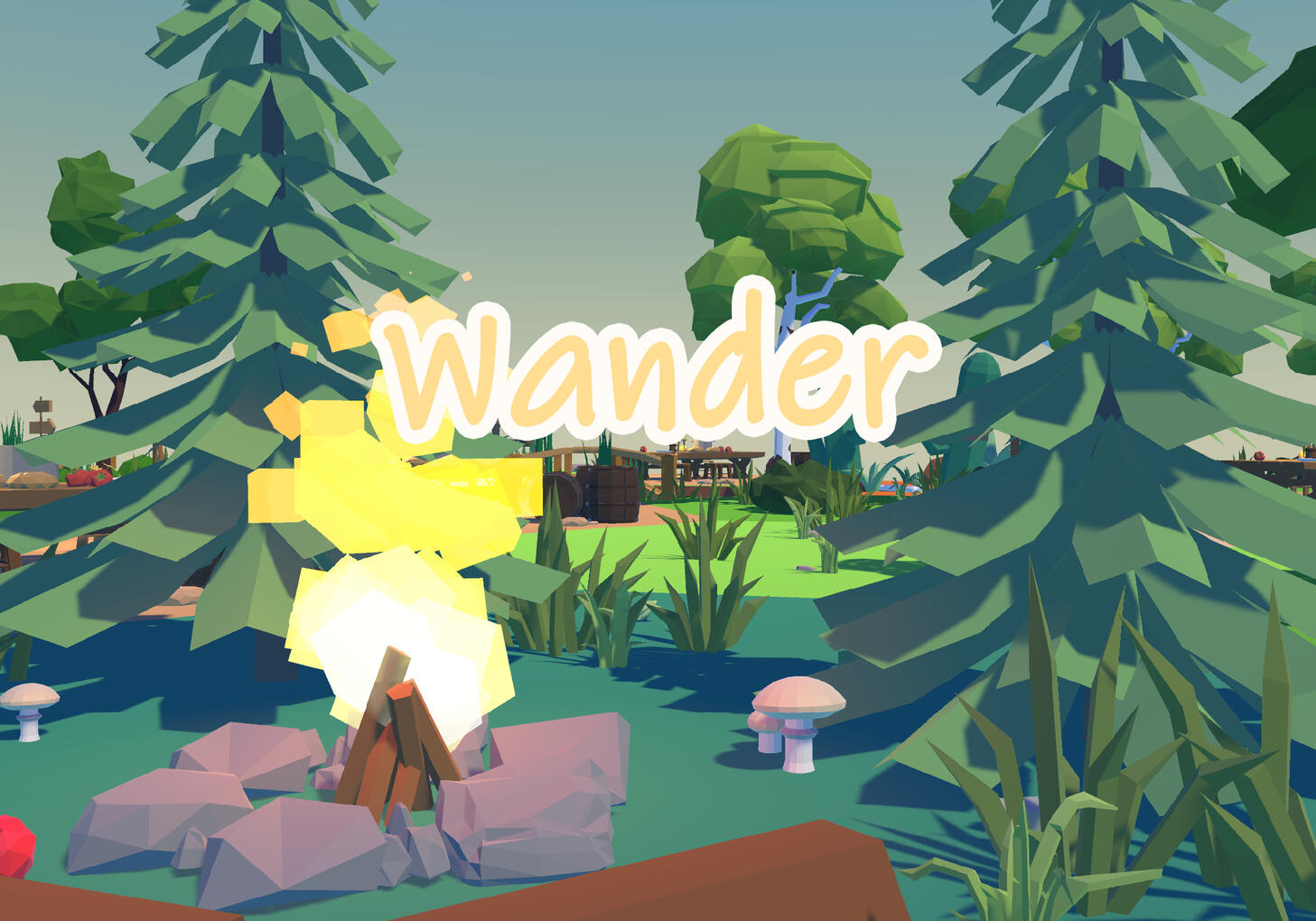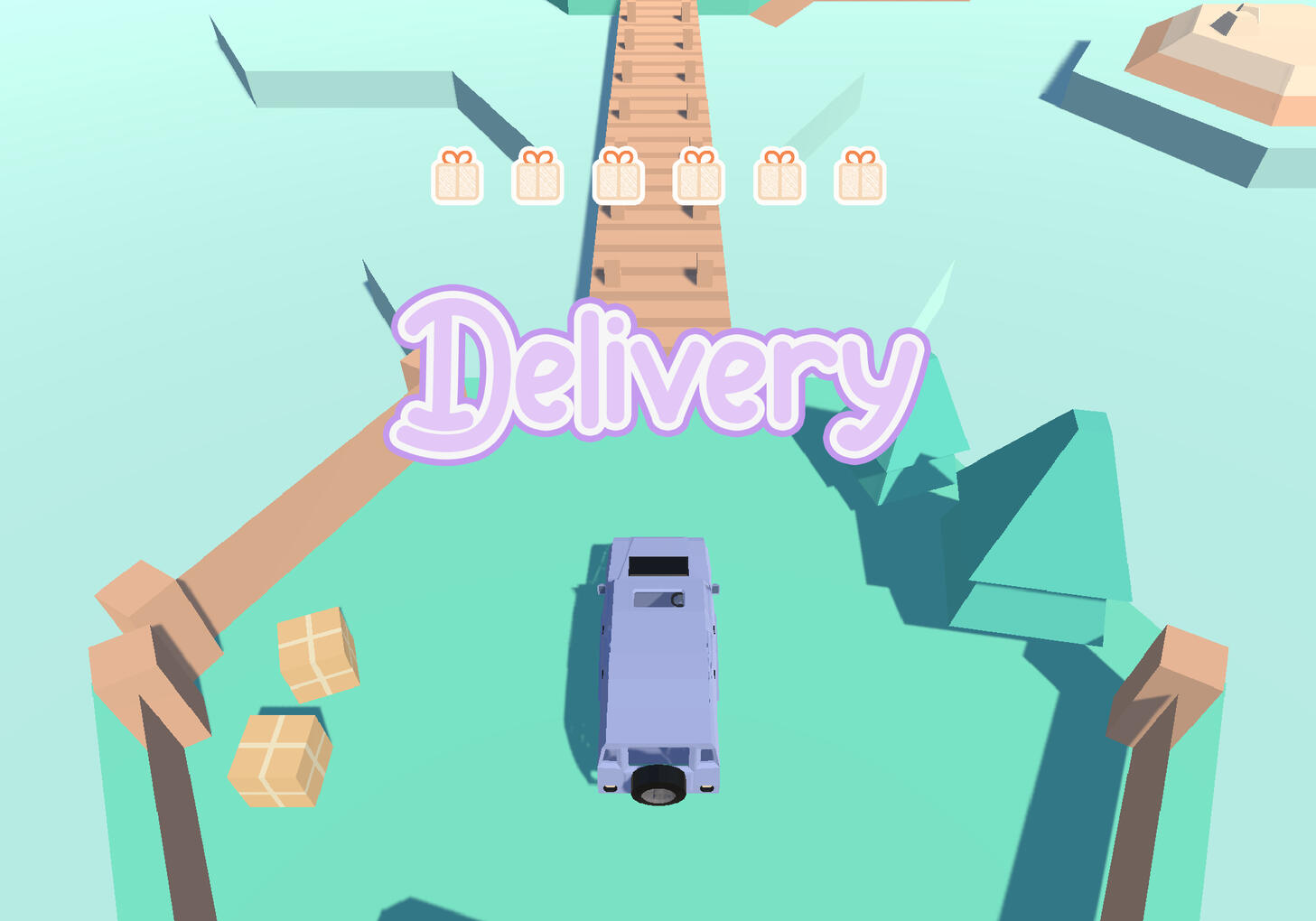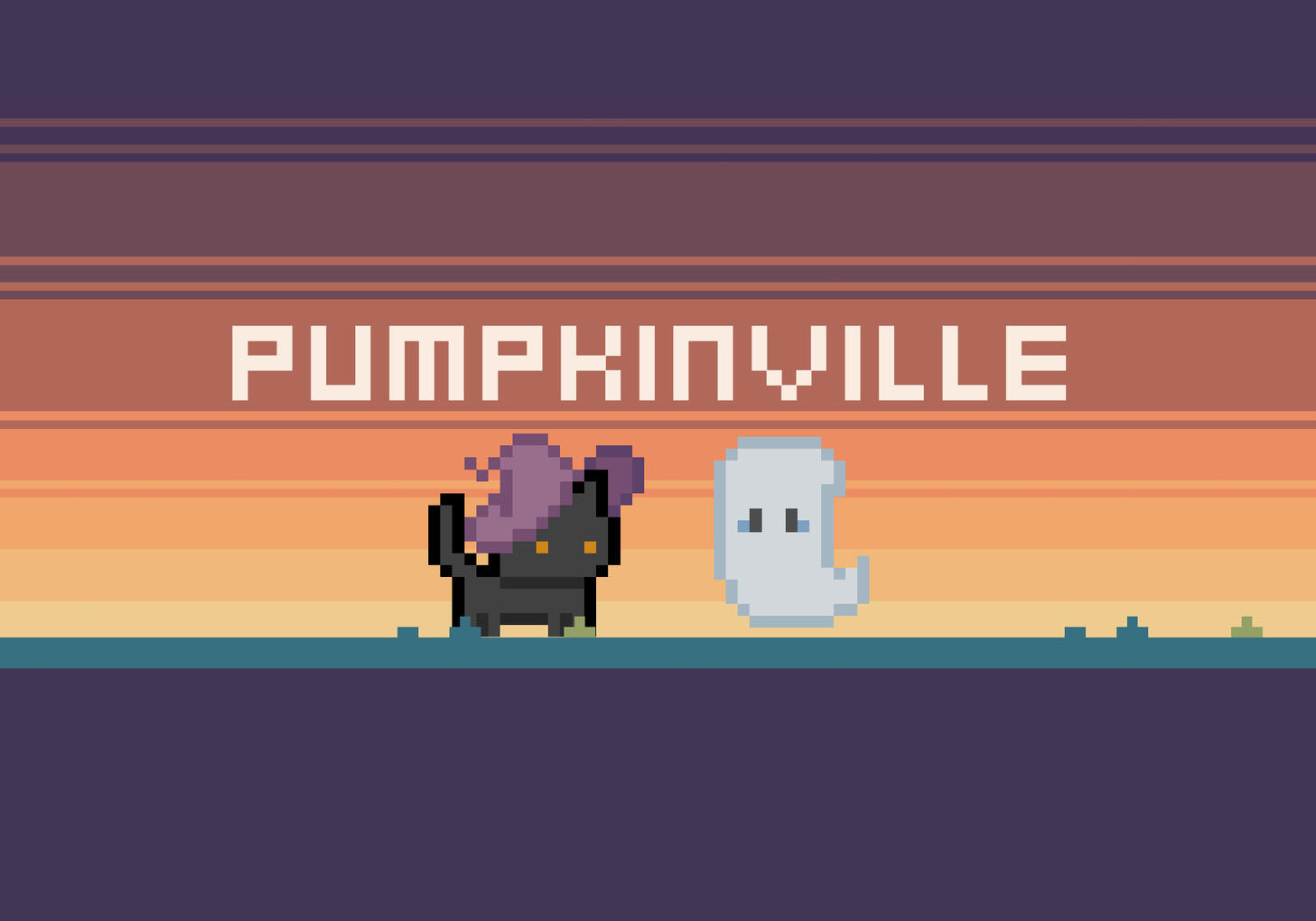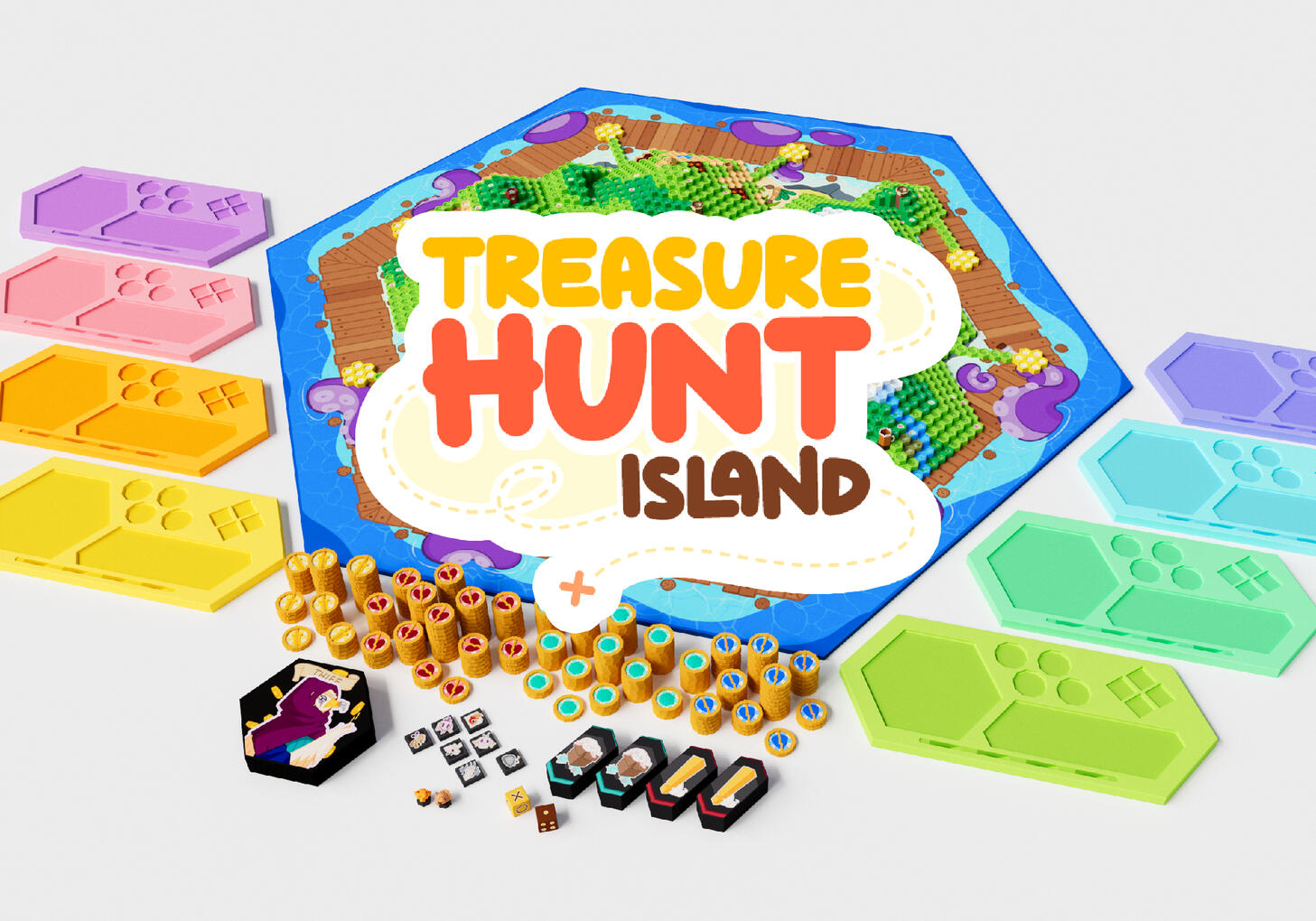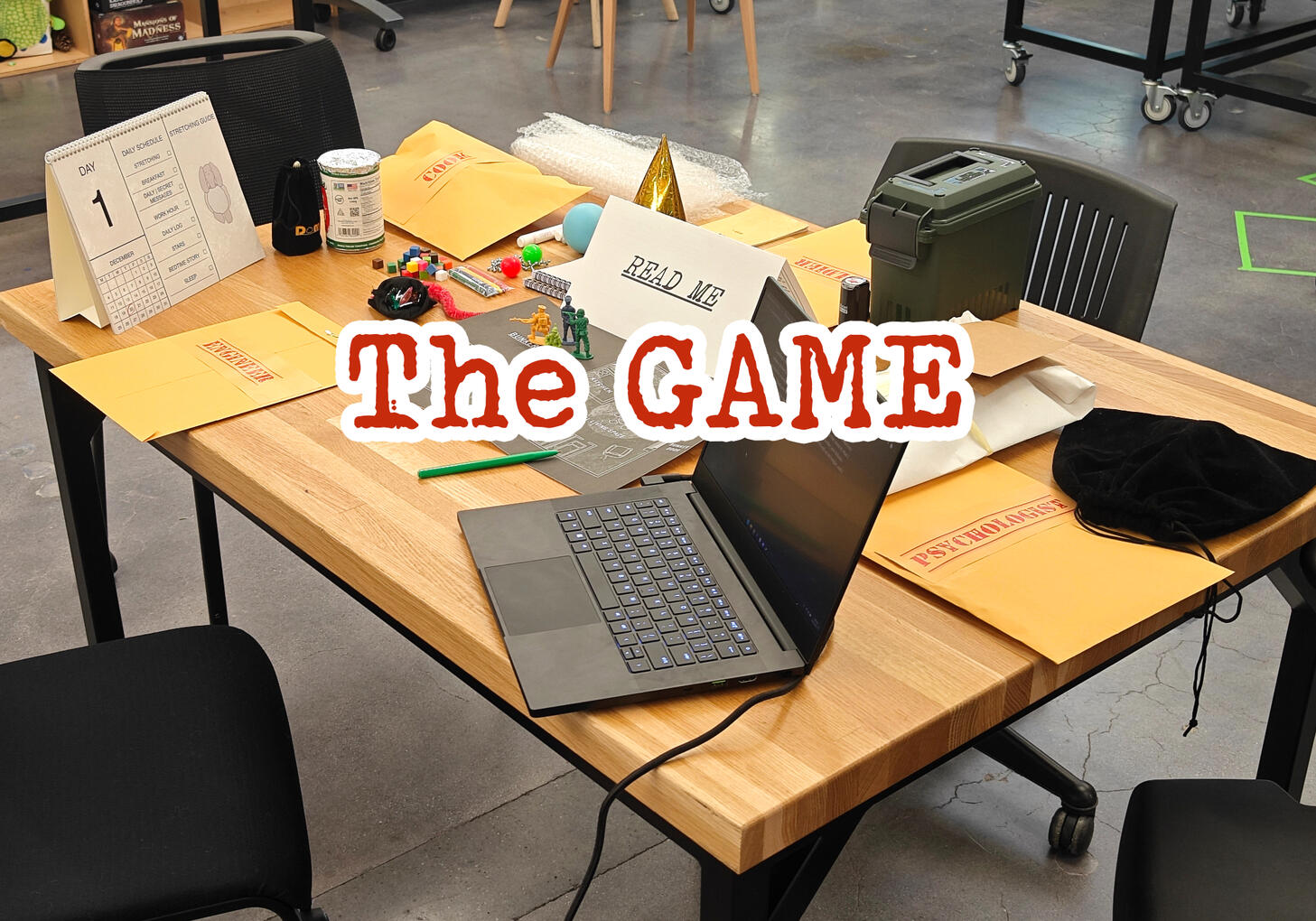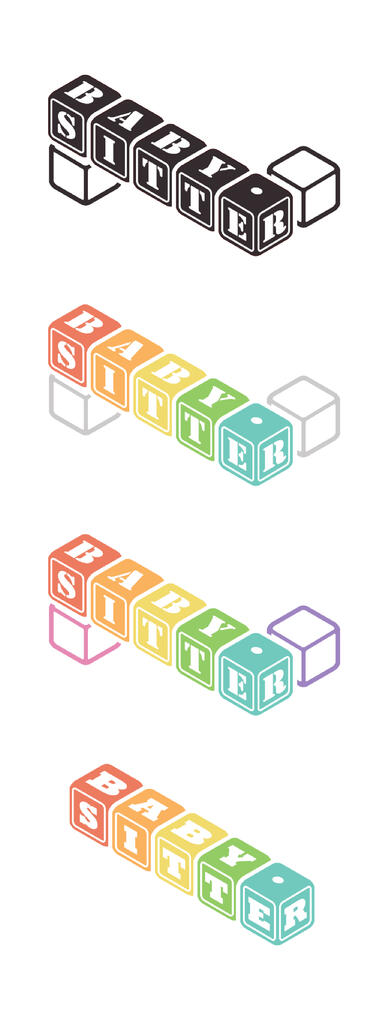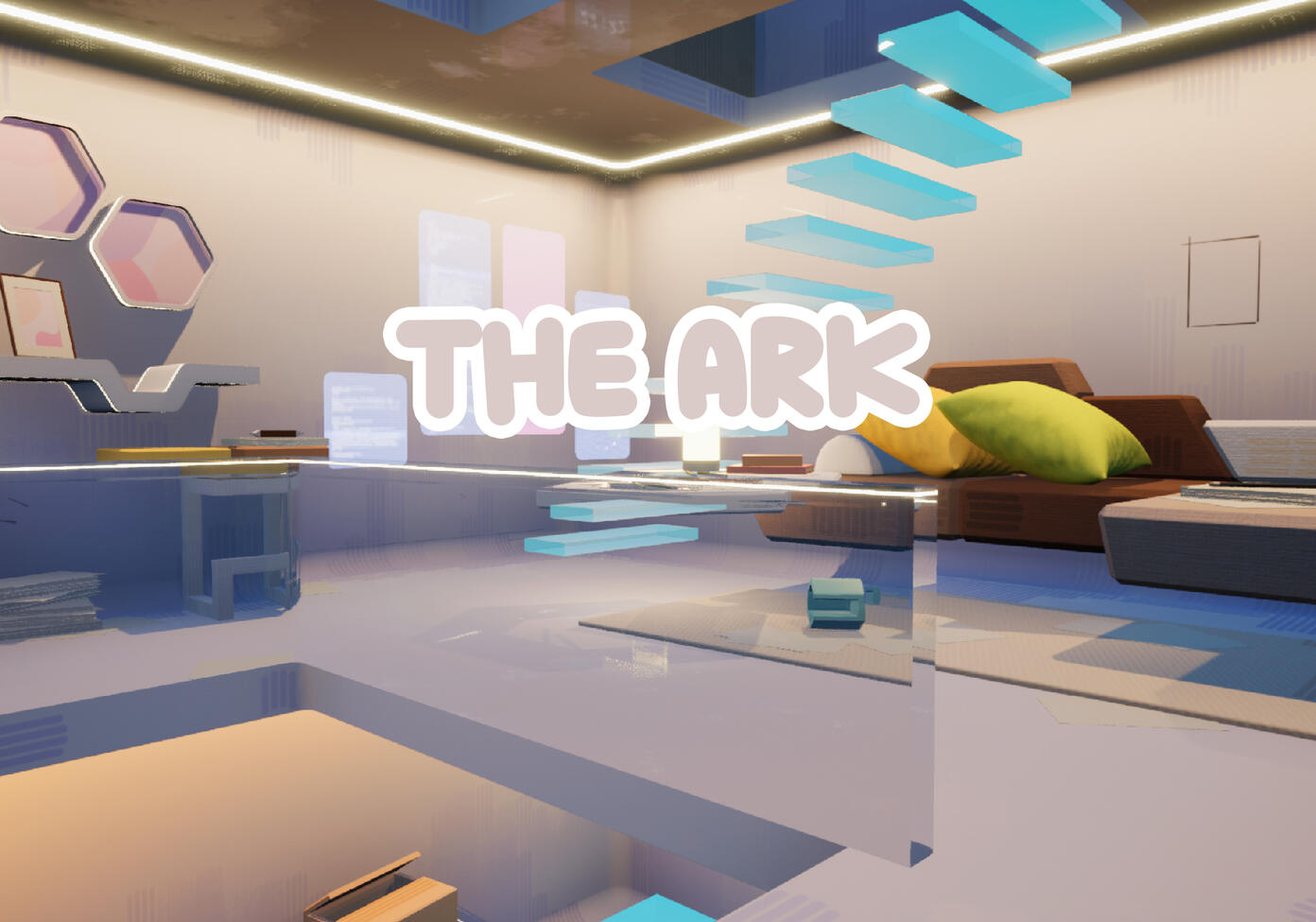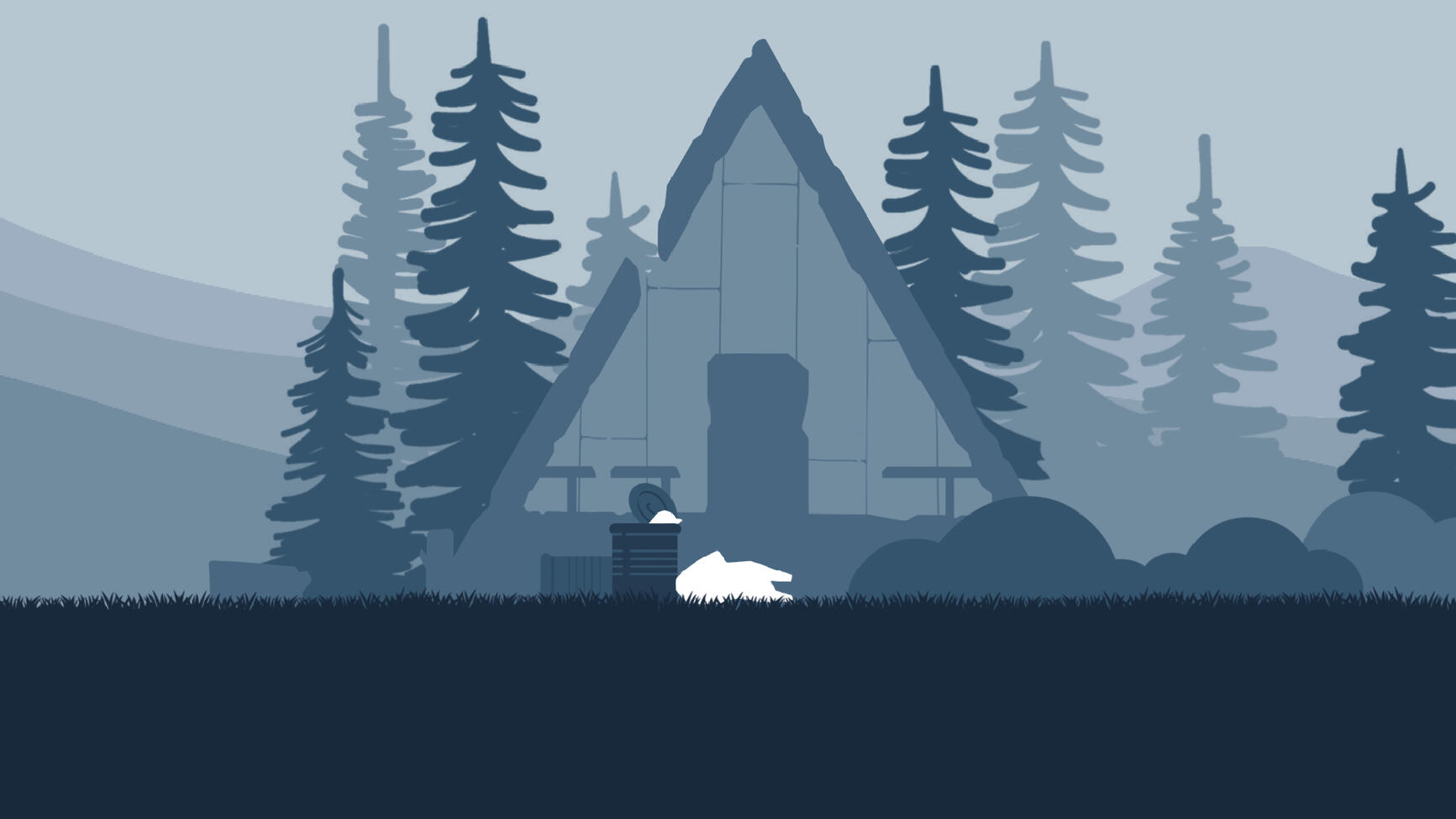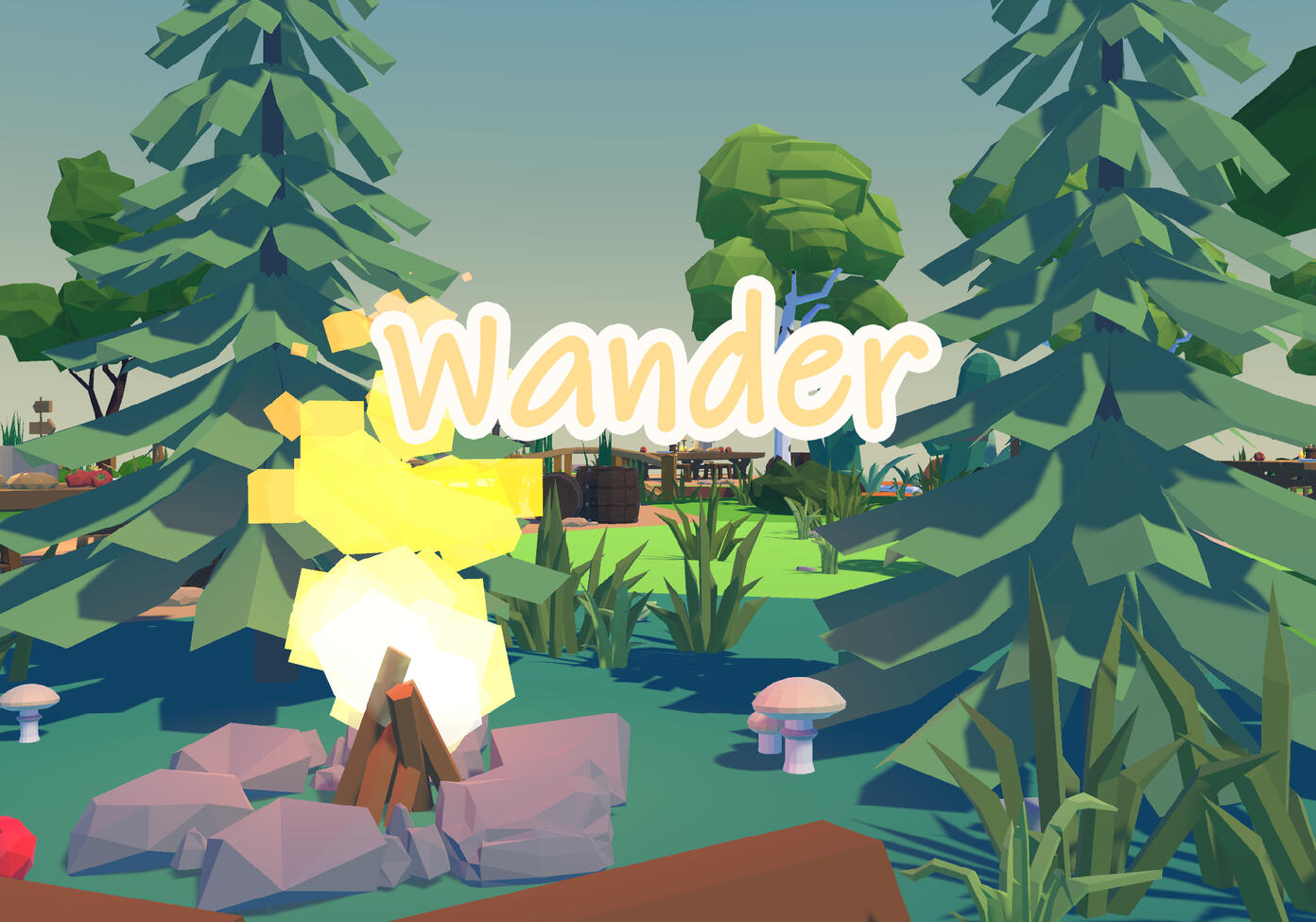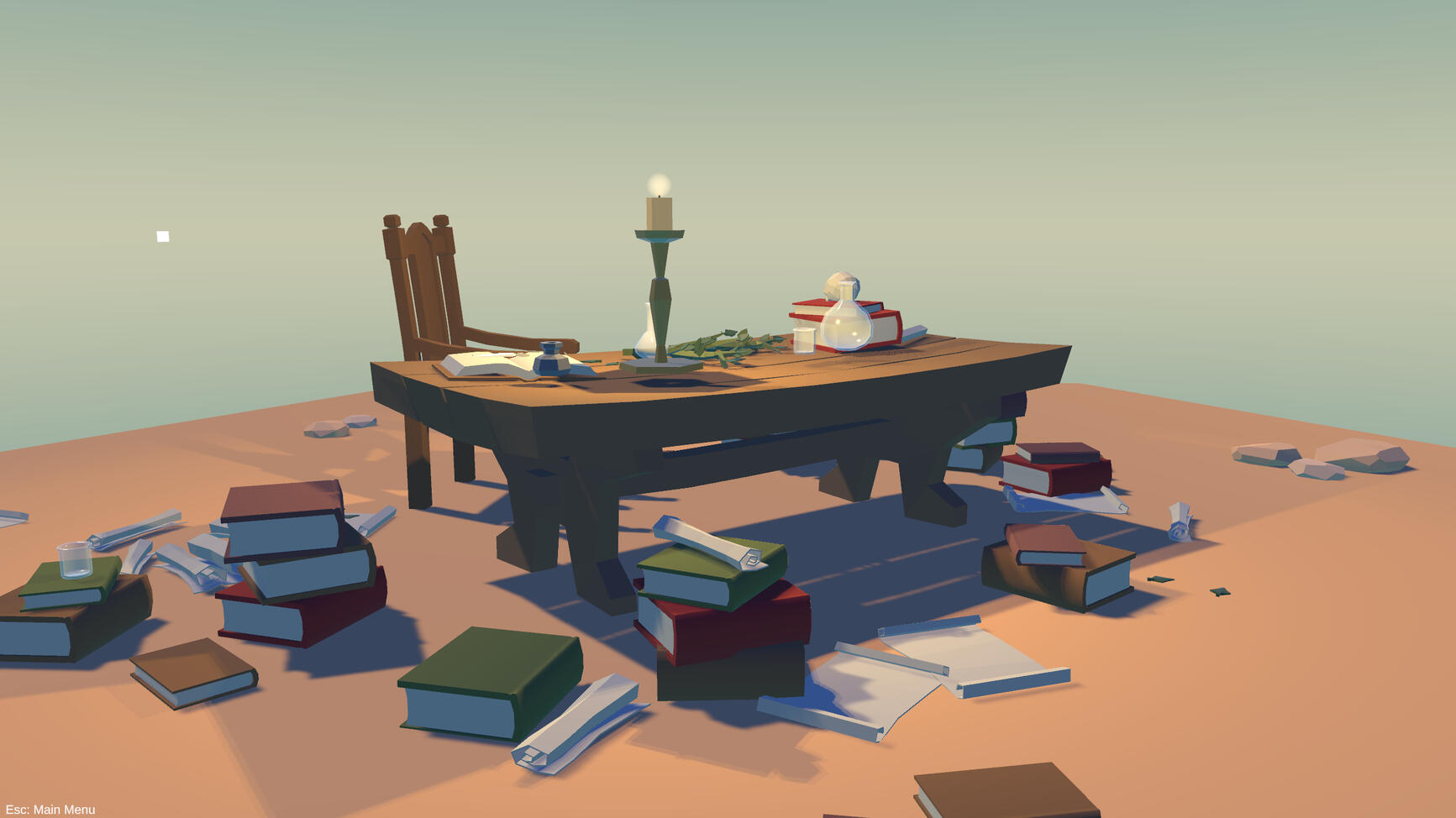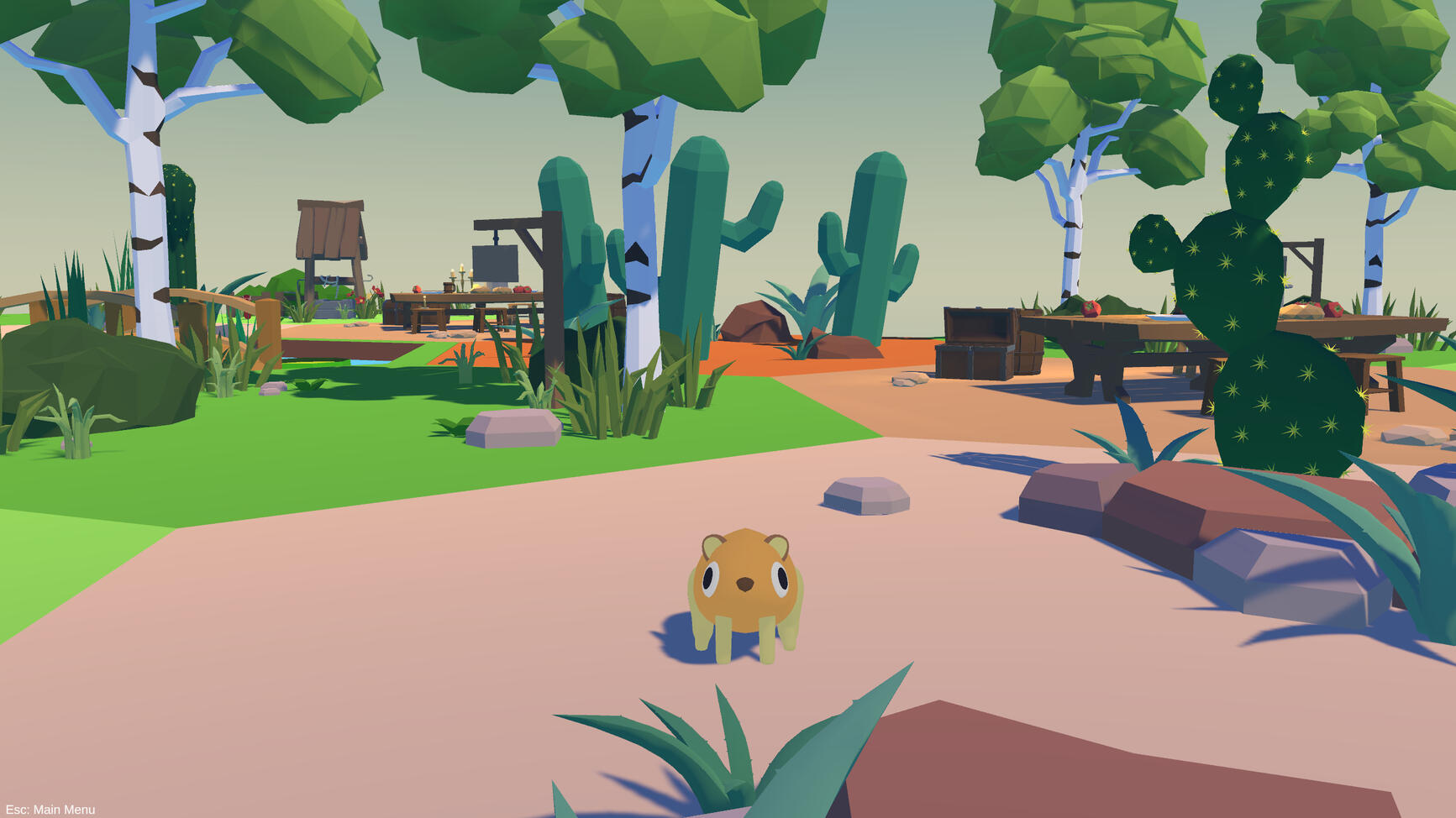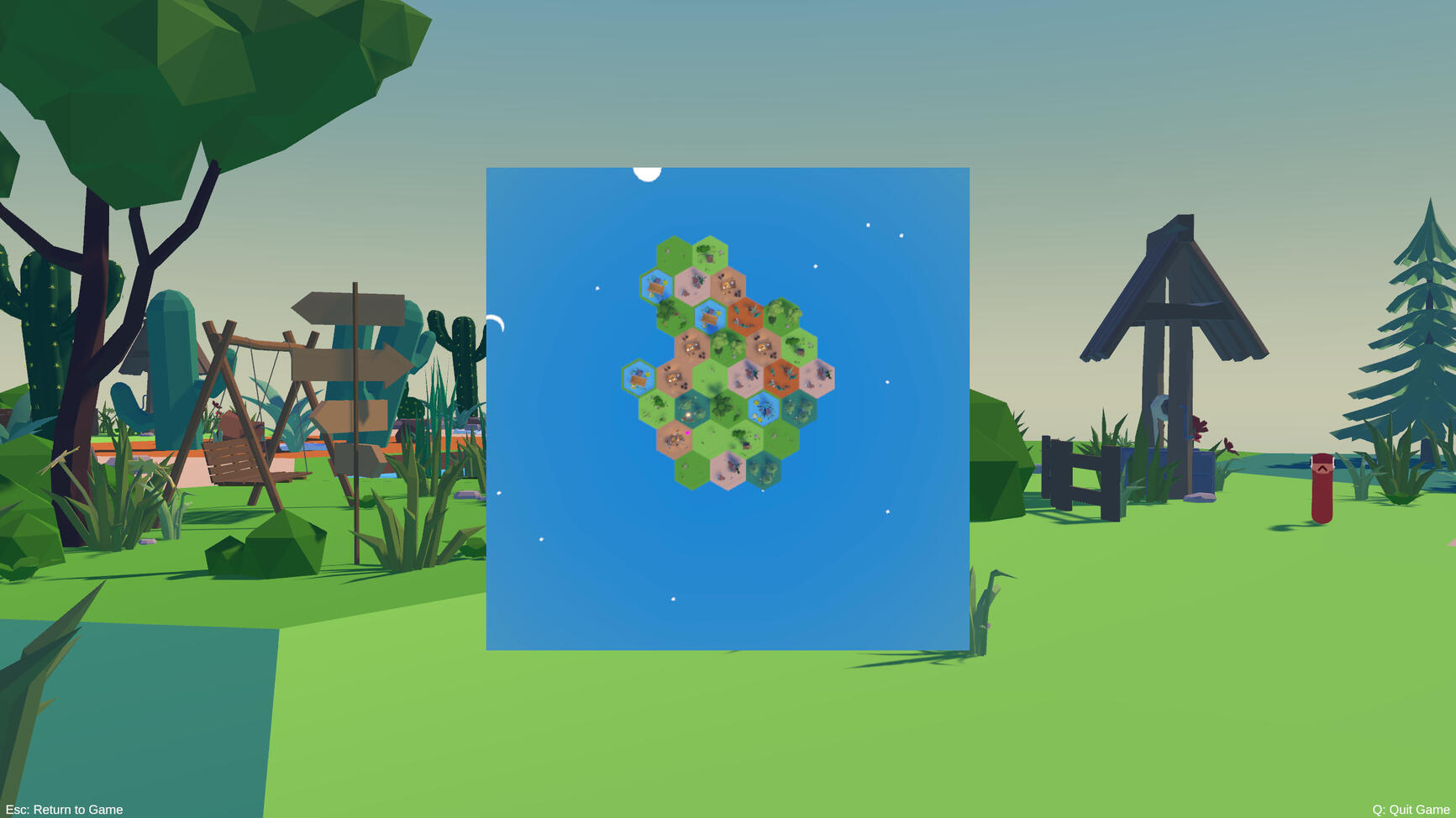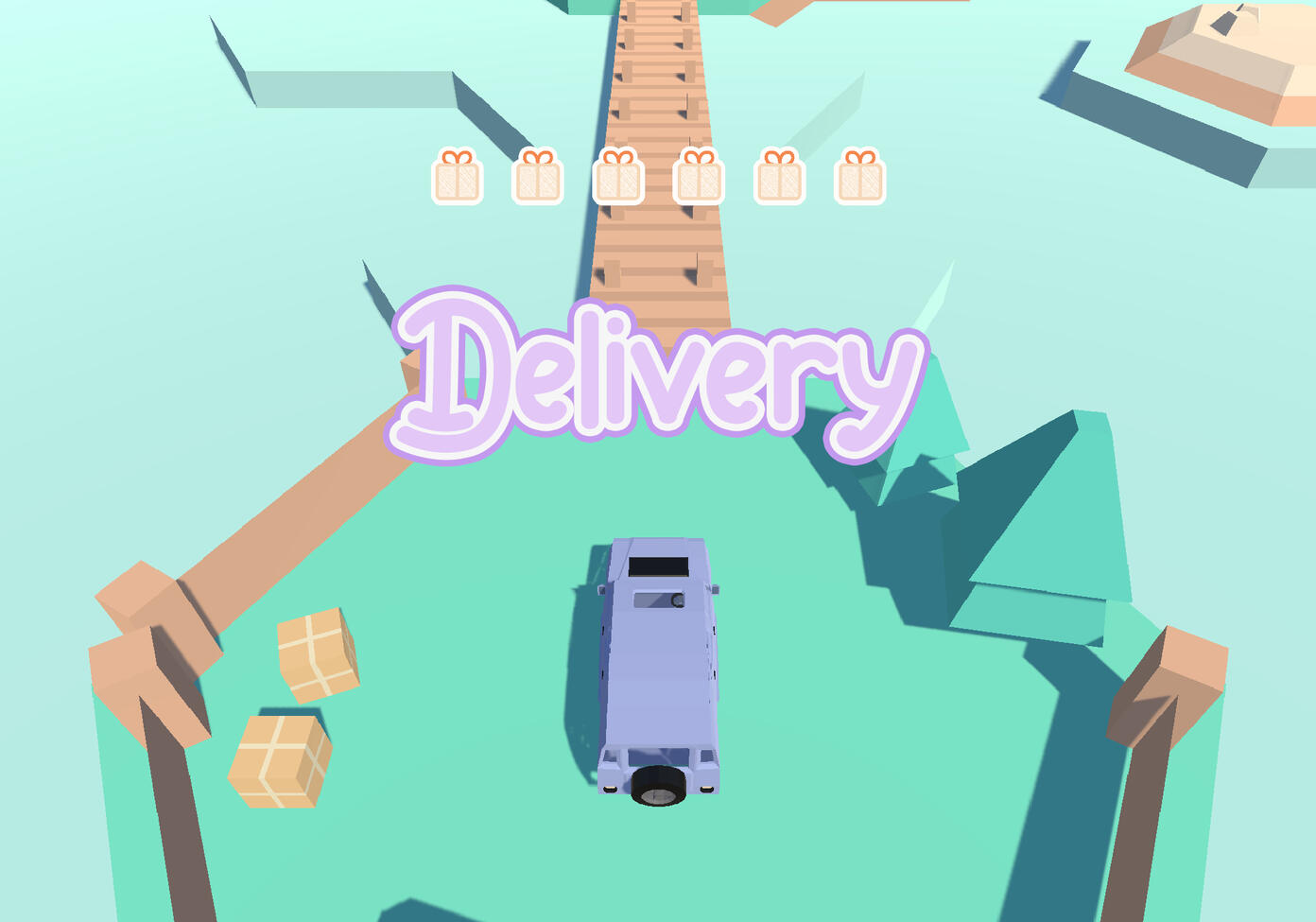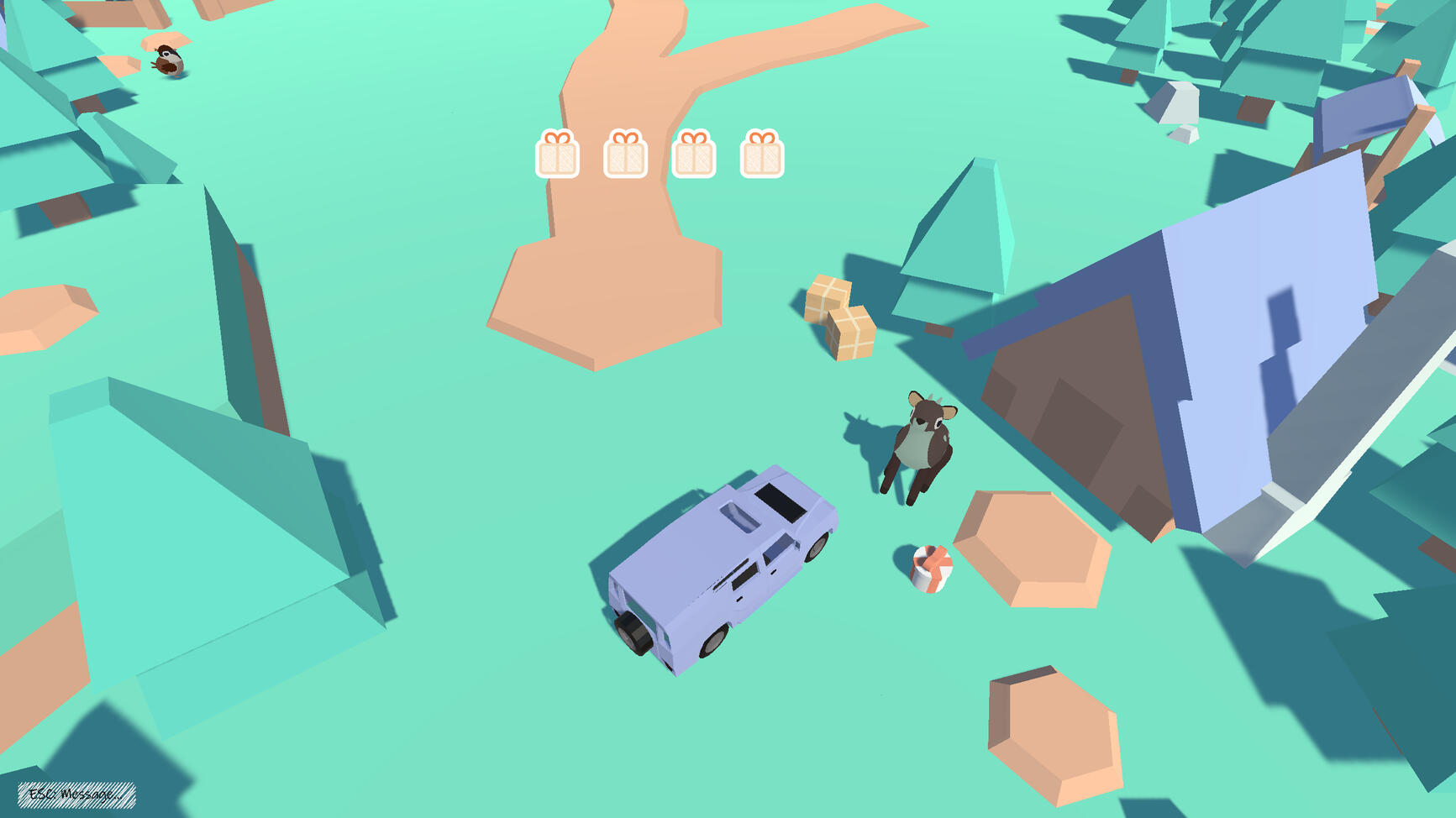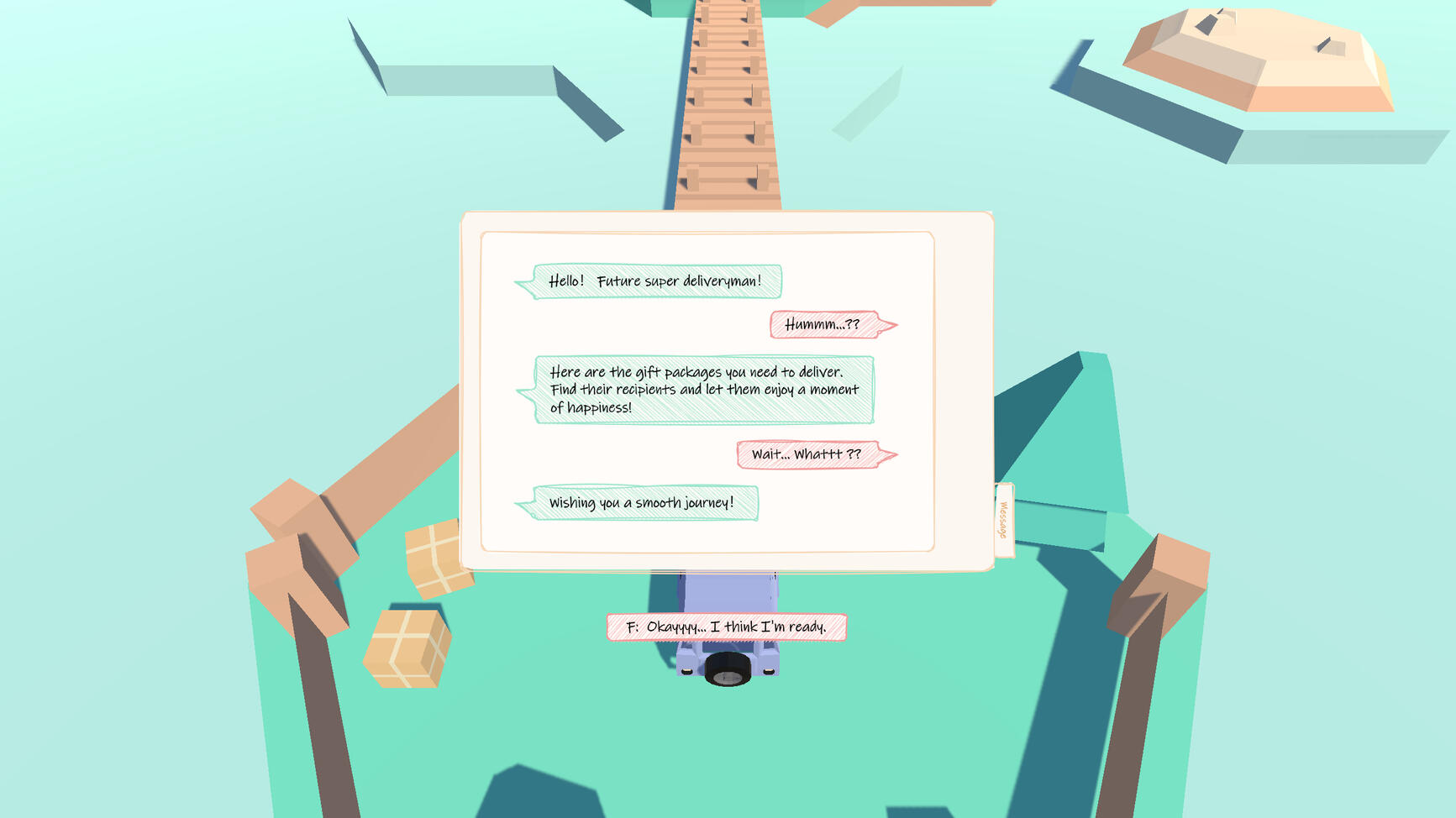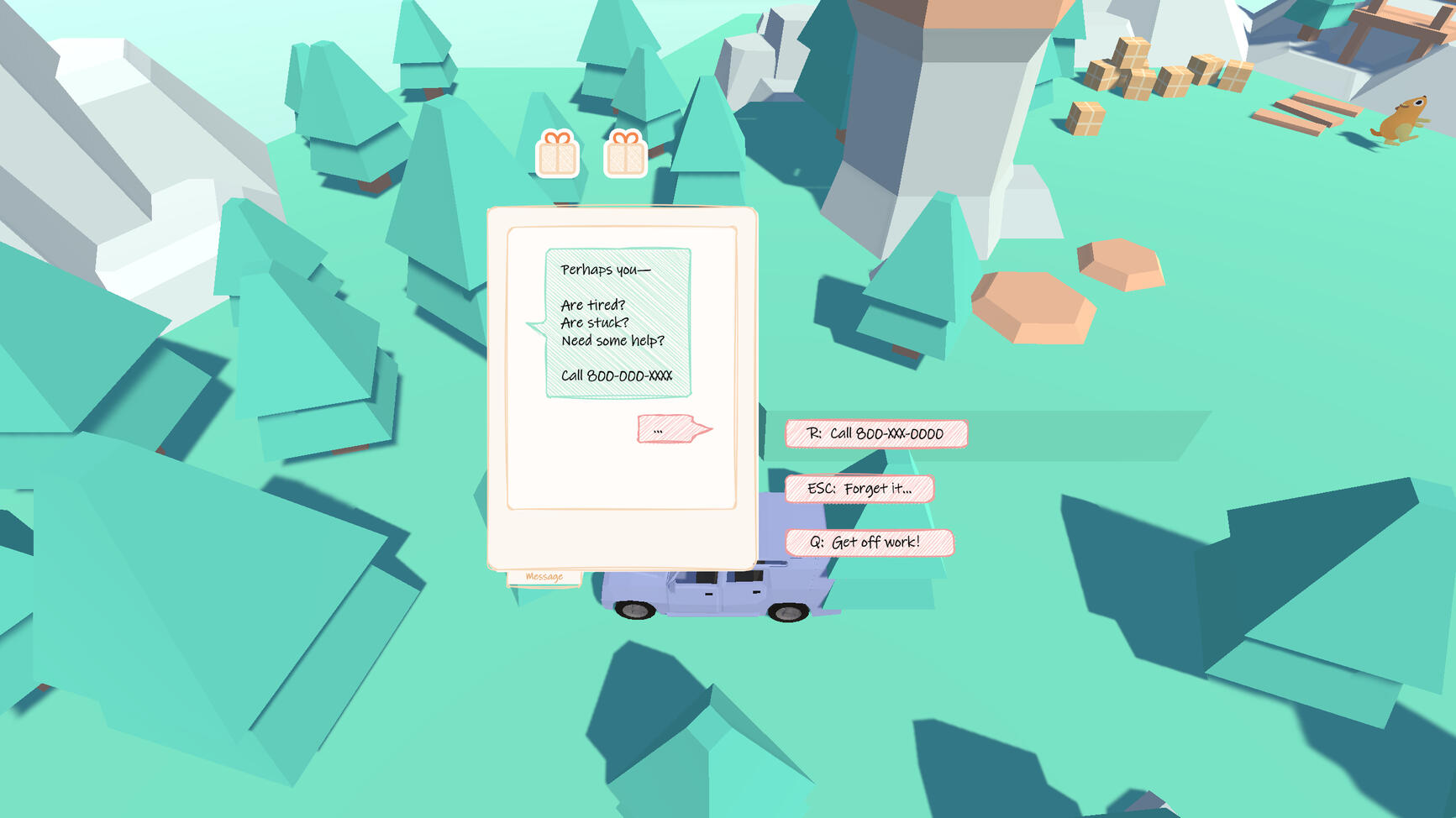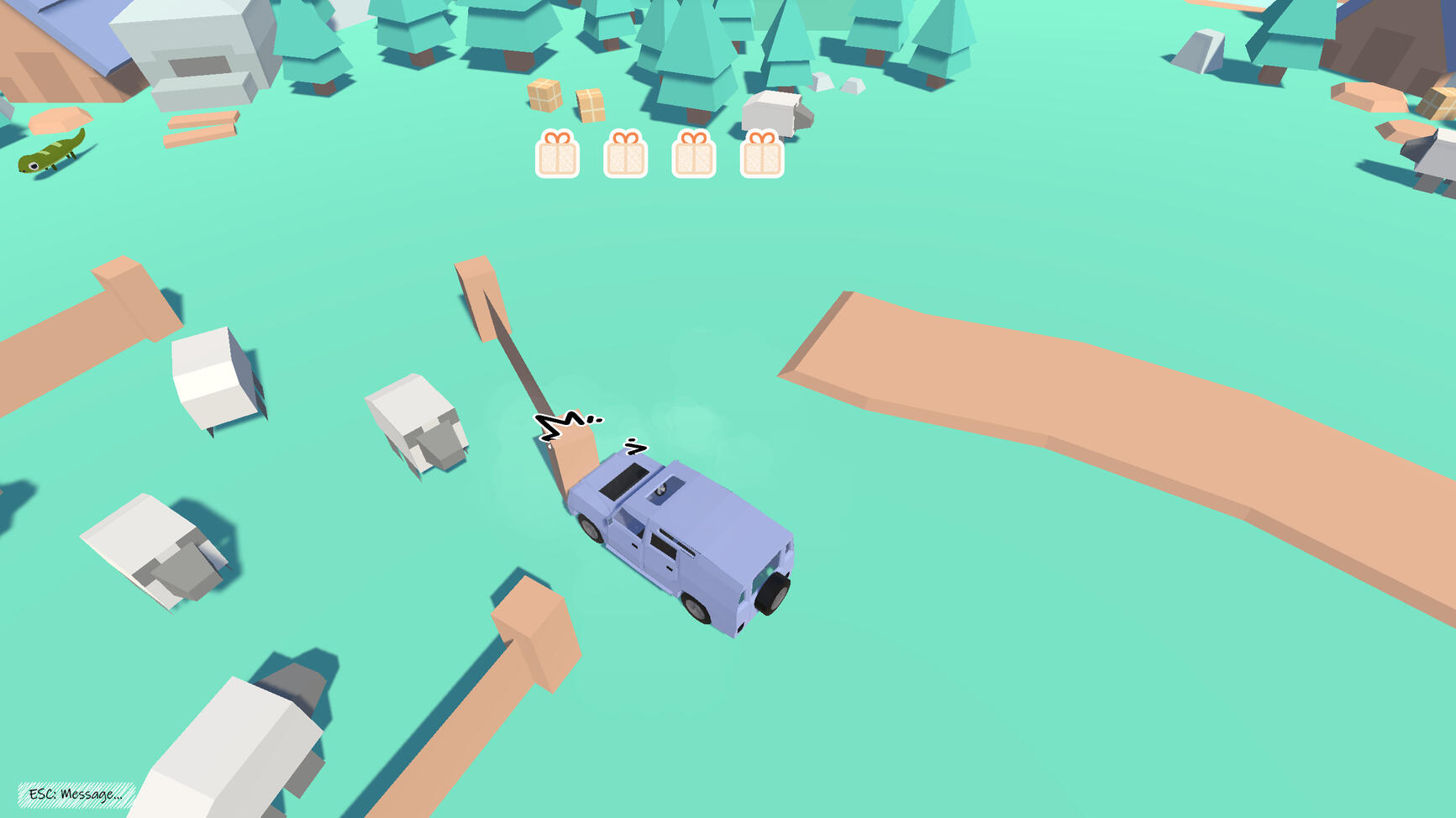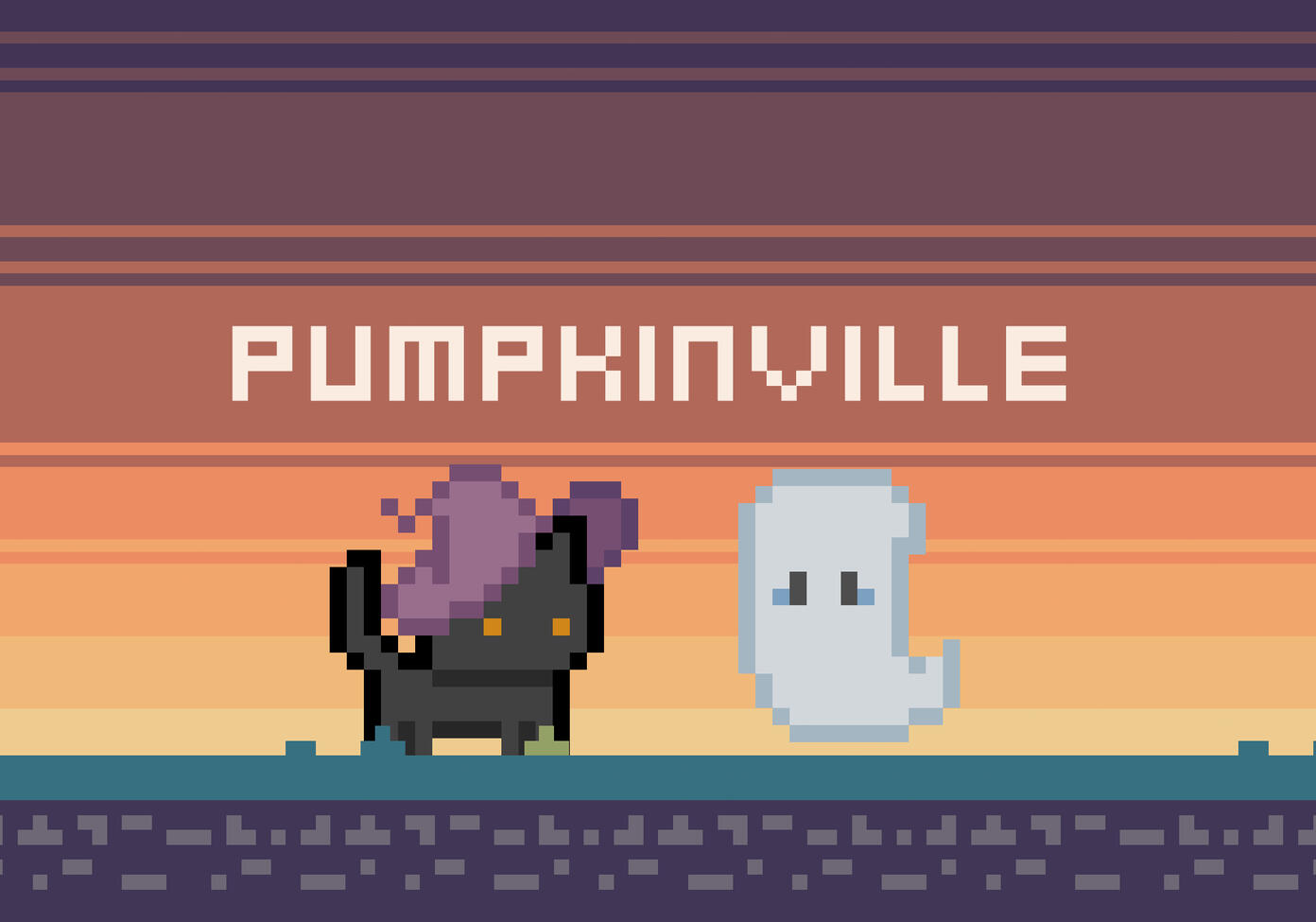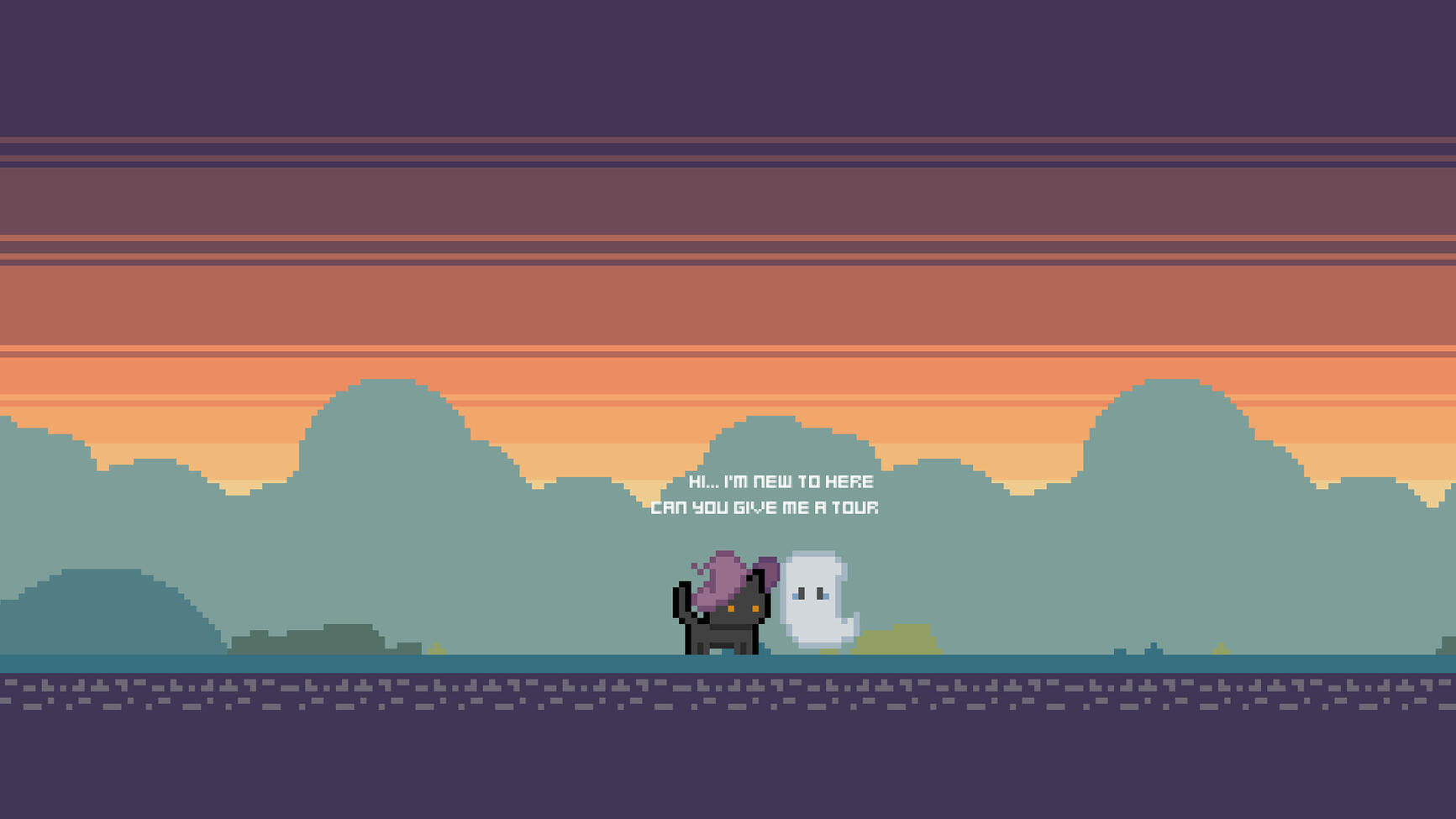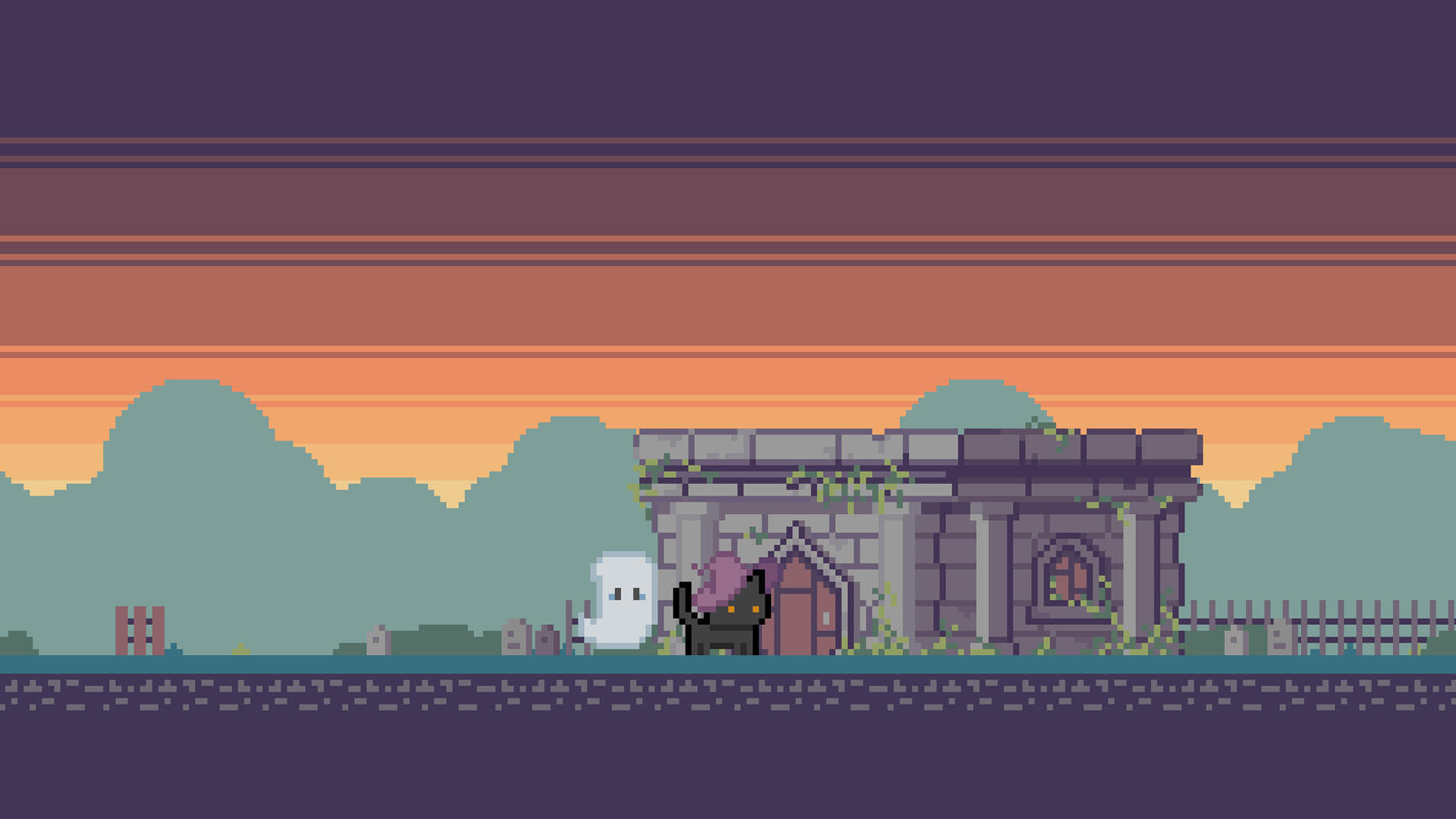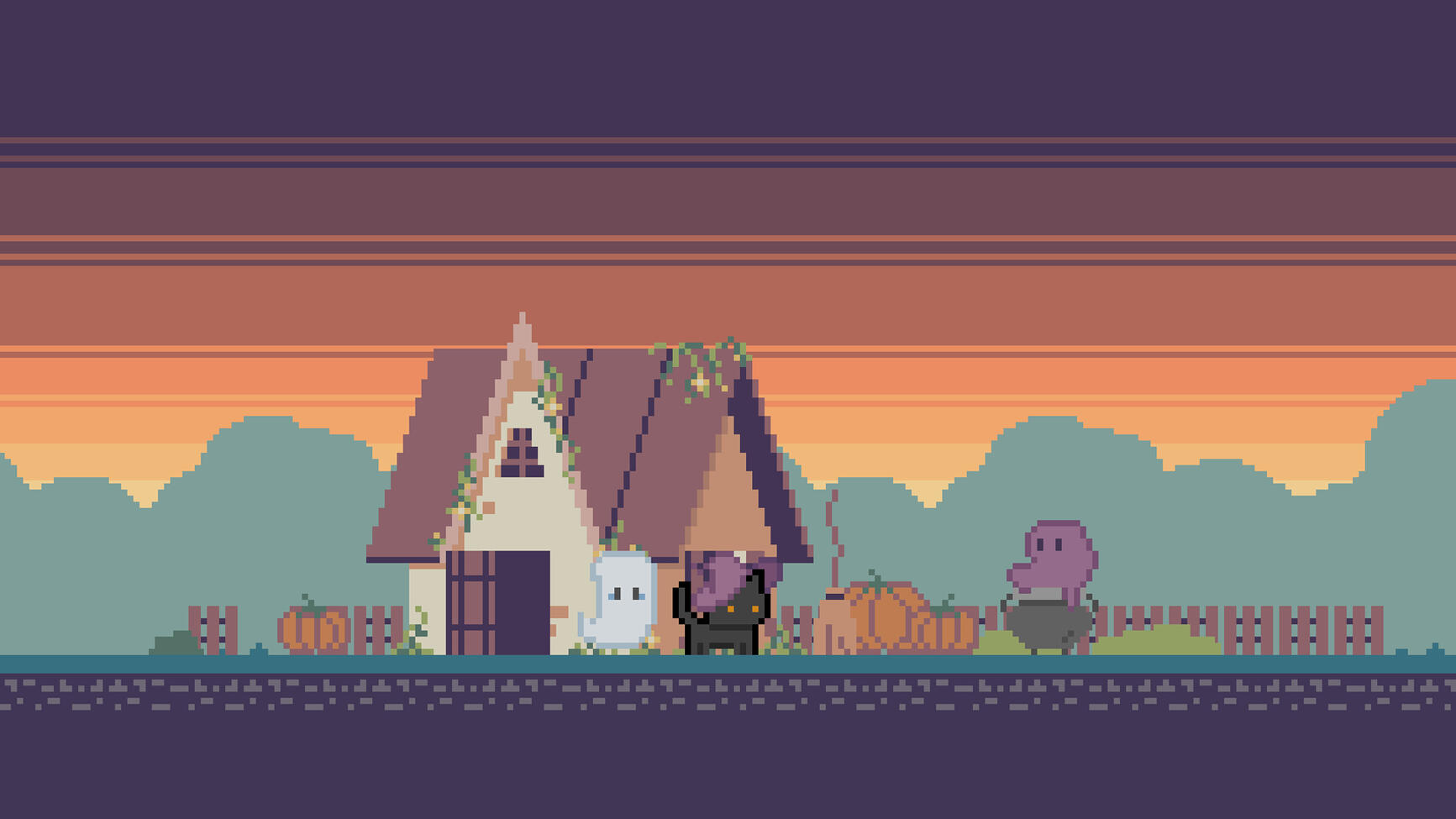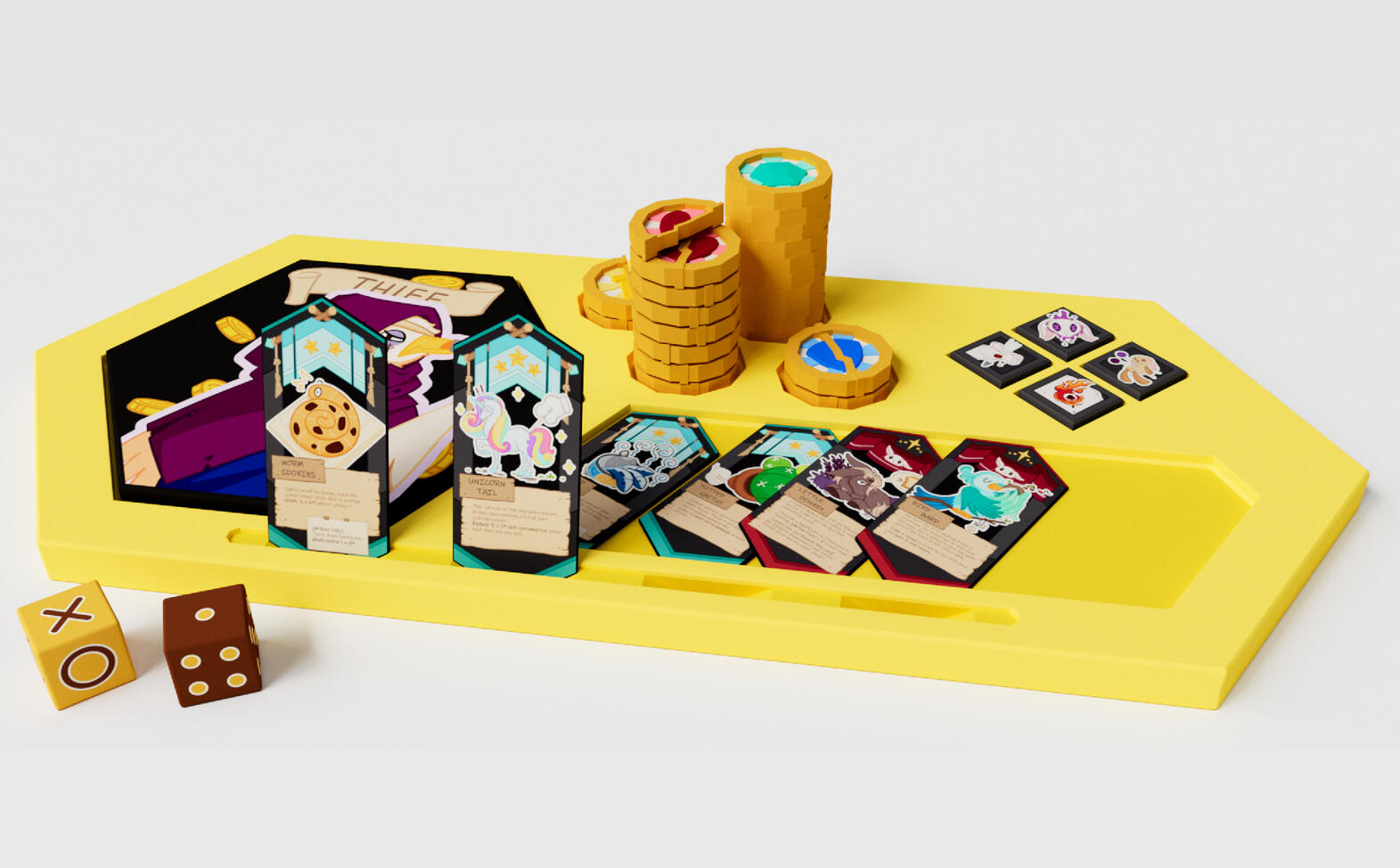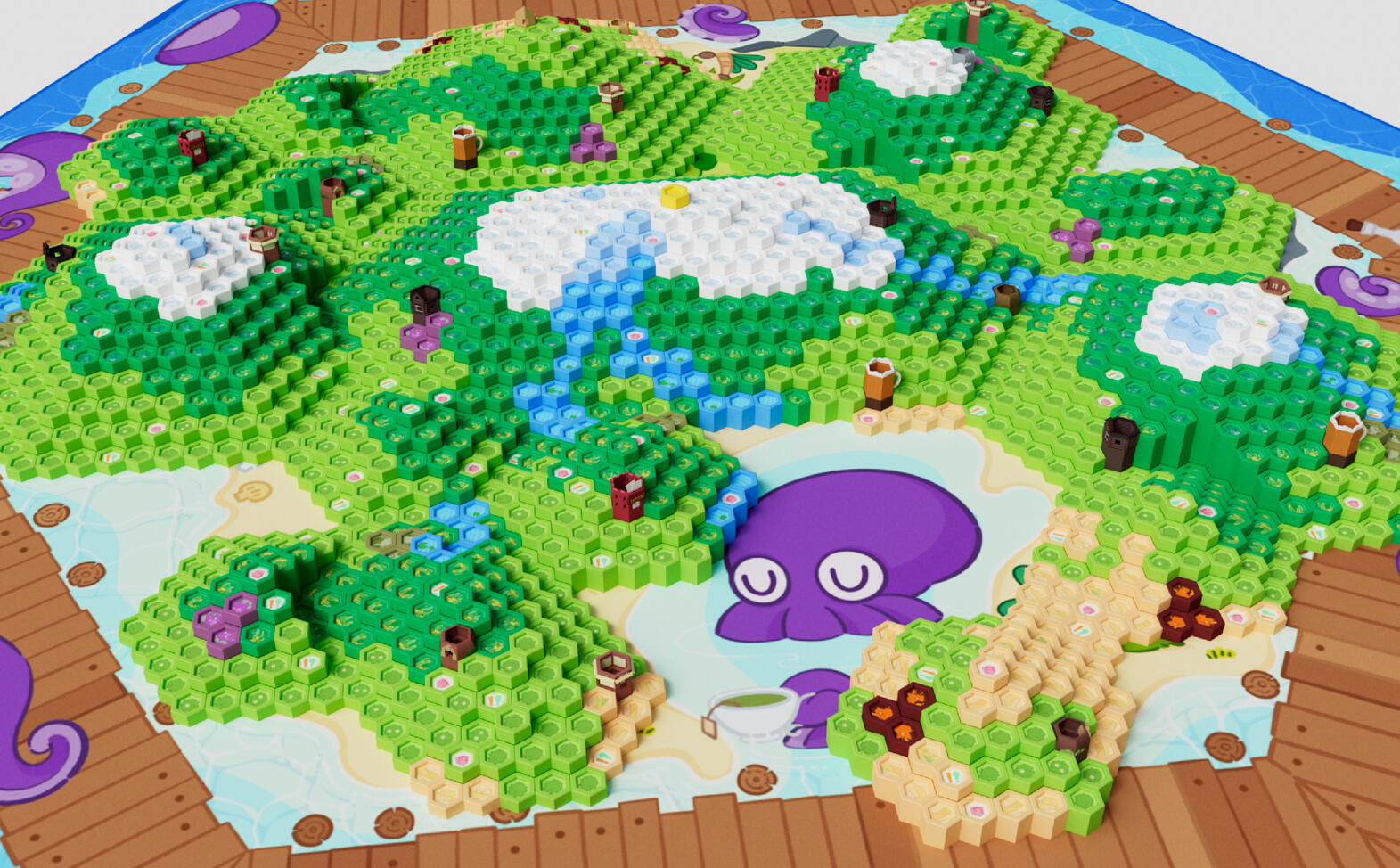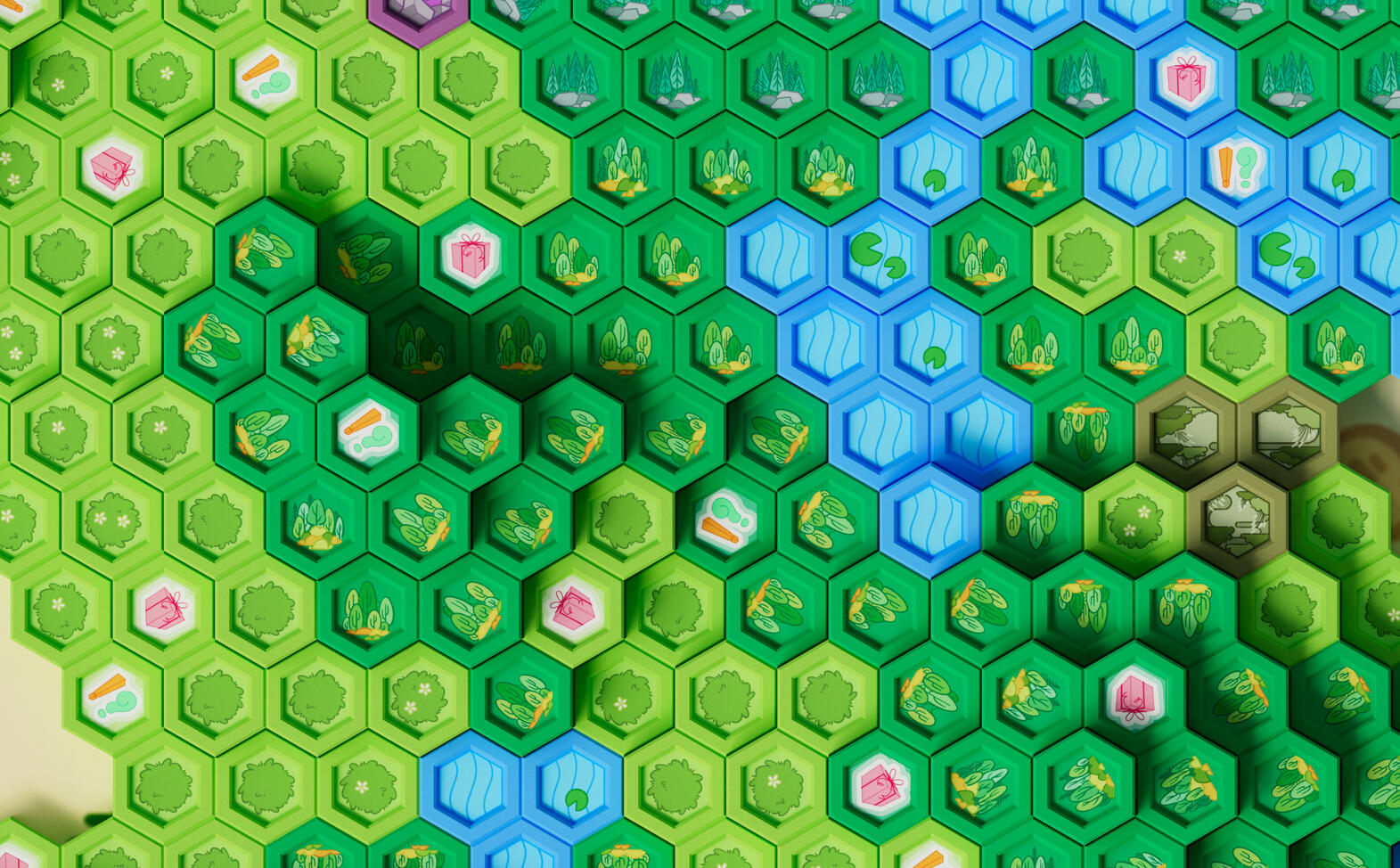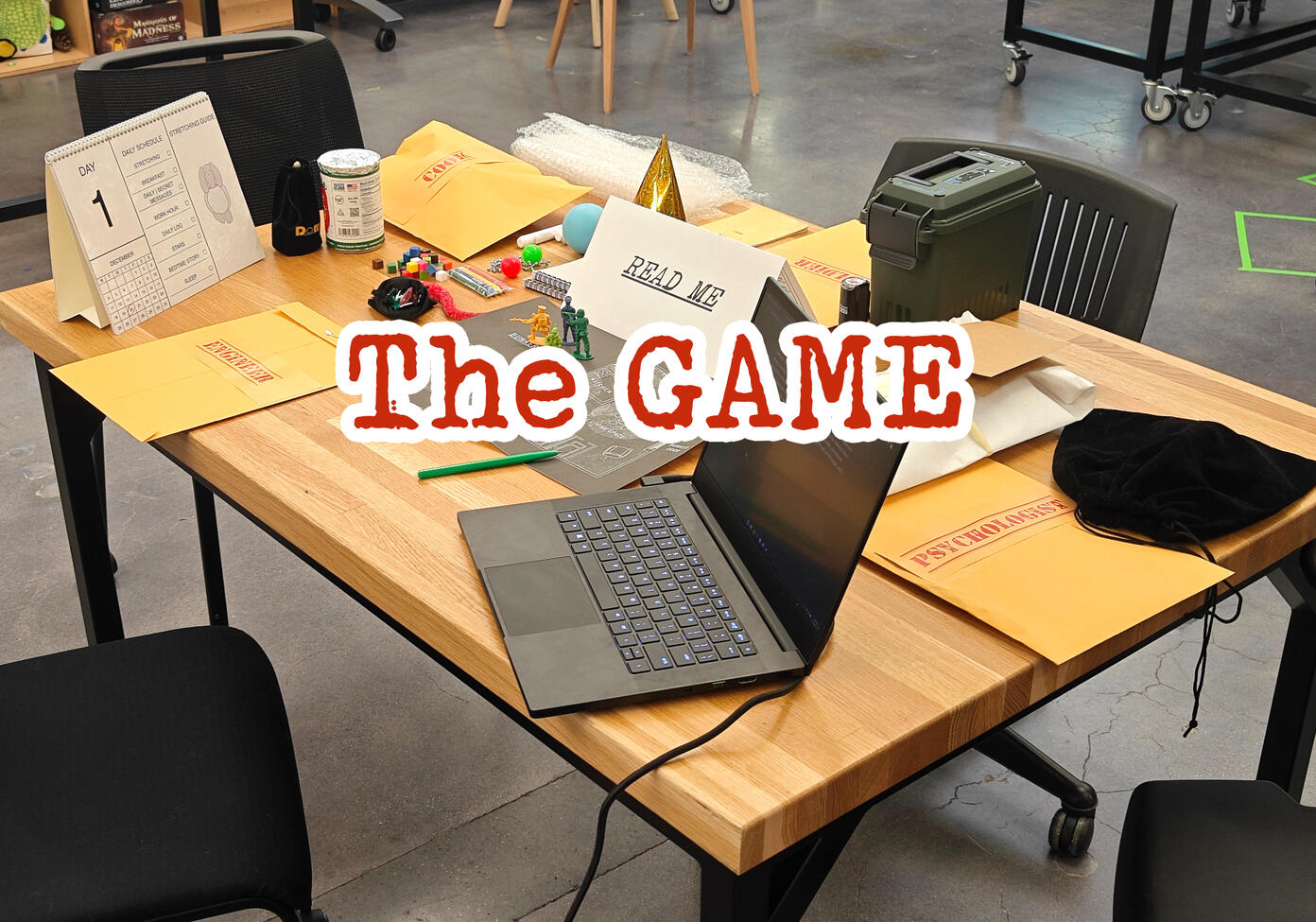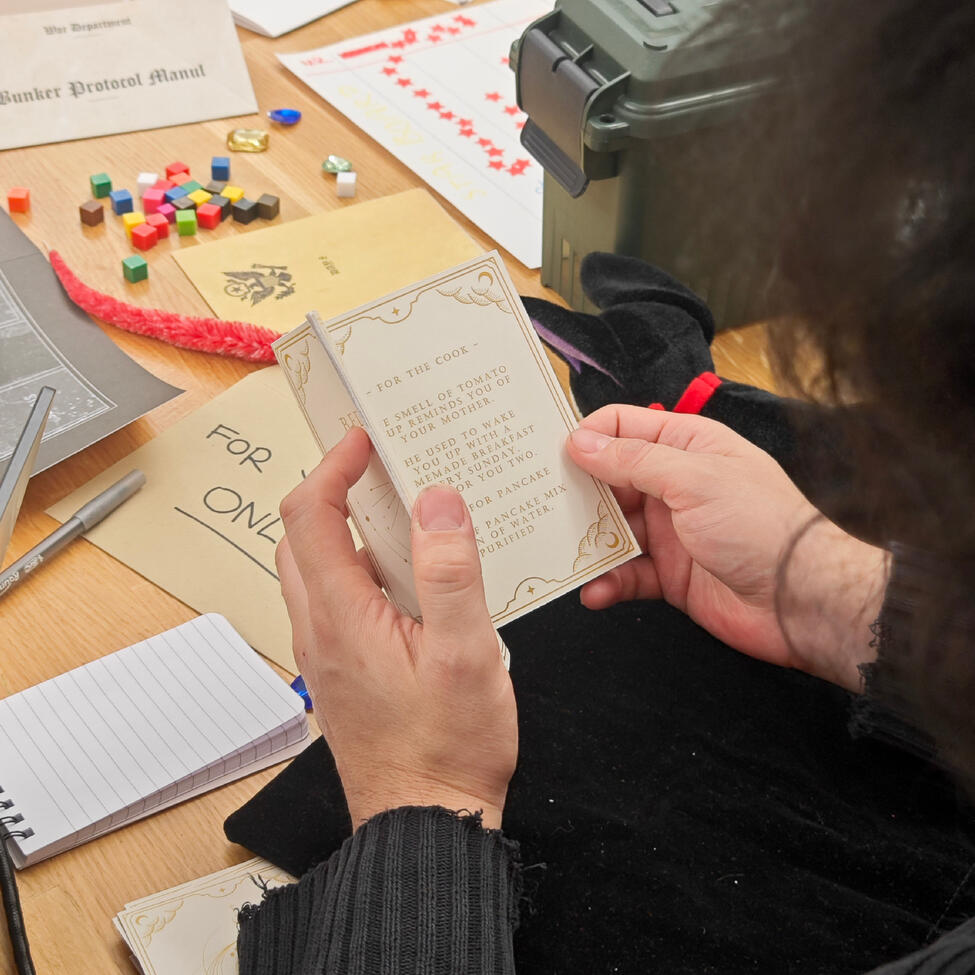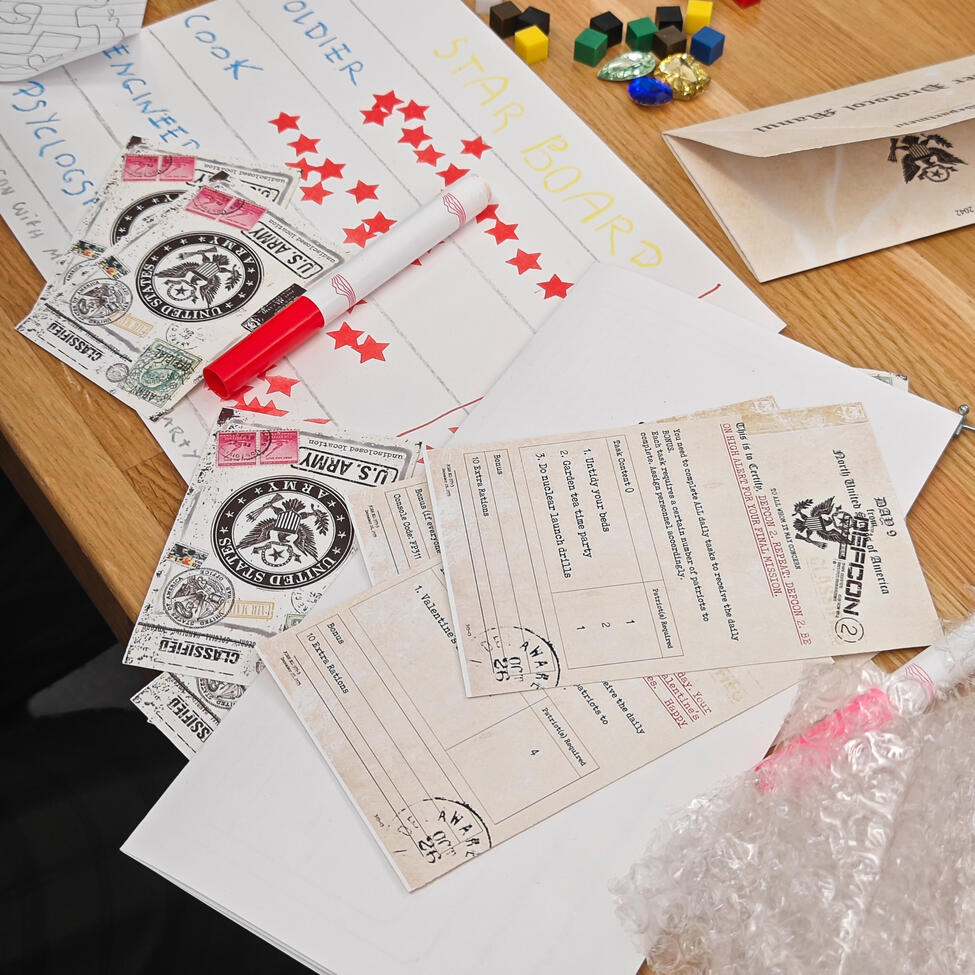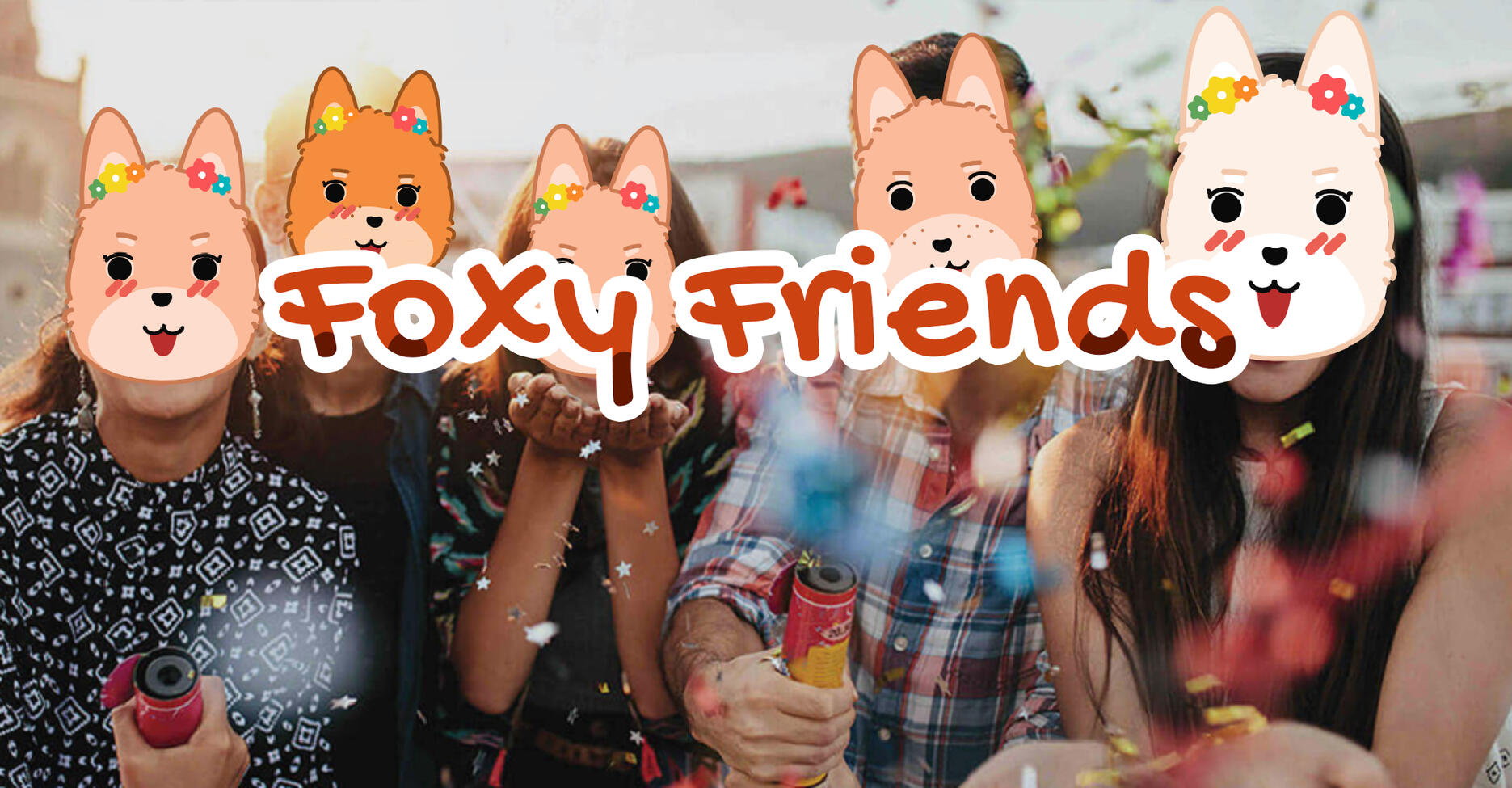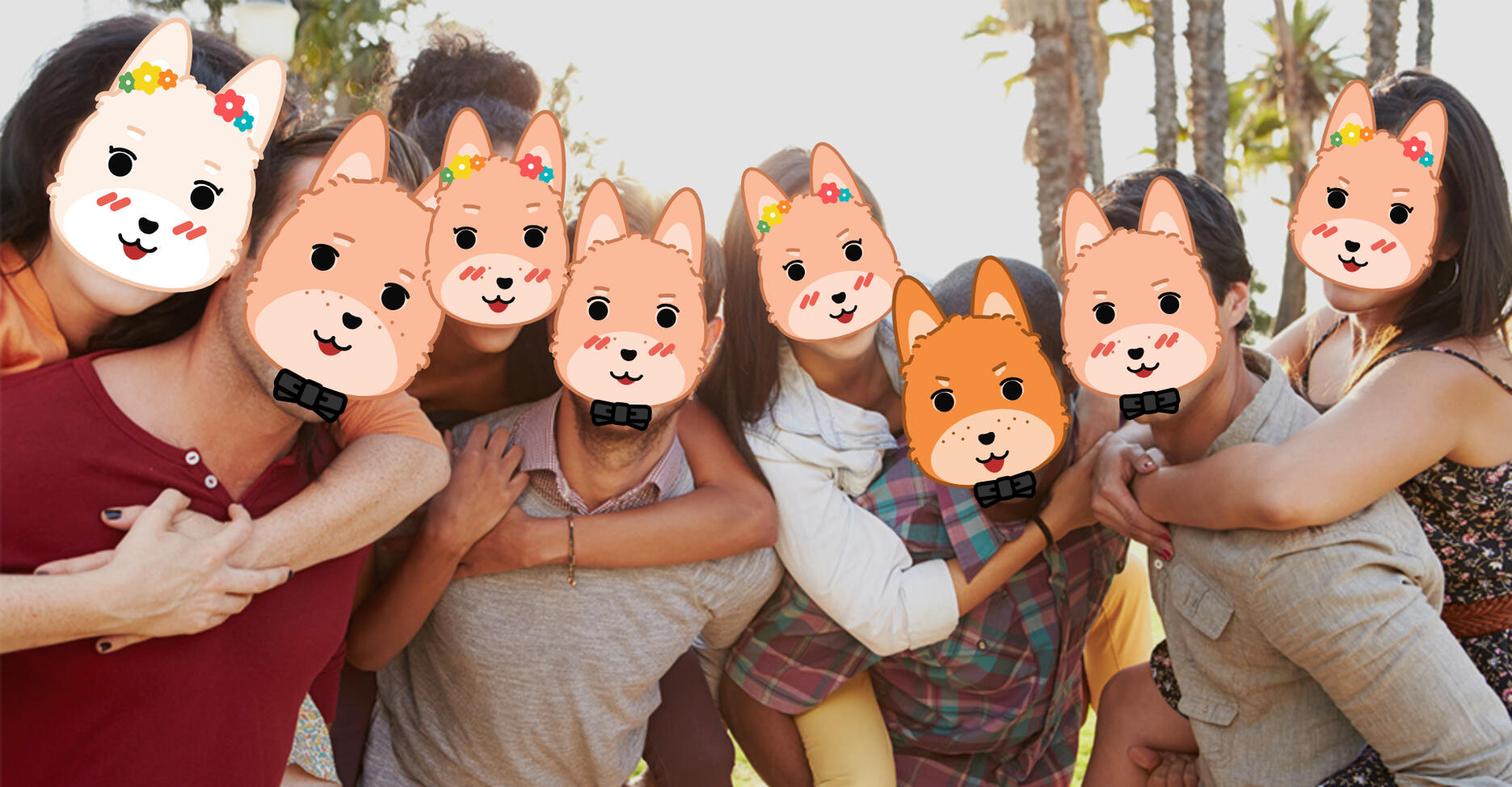Hi!
我是陈彦竹(Vivian),一名就读于纽约大学MFA游戏设计专业的学生。
源于对游戏的热爱,我设计与制作游戏,擅长游戏策划、关卡设计、2D/3D艺术、
游戏编程以及批判性写作等。
电子游戏
桌面游戏
绘画 & 艺术
写作
The Ark
电子游戏, 2020 - 2022
The Ark 是一款融合了解谜和步行模拟元素的第一人称游戏。在游戏中,玩家扮演在末日环境中生存的拾荒者,偶然间步入了一座被遗忘的方舟,并意外地被困其中。而在寻找出口的过程里,玩家将还原失落方舟中的点滴细节,拼凑出曾经在这里生活的人们的性格、关联,以及他们的生活日常与喜怒哀乐。在游戏 The Ark 的结局部分,玩家作为主角,携带着方舟的核心,踏上了属于他们自己的未来。游戏页面
Game Design Document
Demo Video操作方式
WASD - 移动
Space - 跳跃
F - 互动/拾取
J - 日志
E - (日志界面)下一页
Q - (日志界面)上一页创作使用工具
Adobe Photoshop, Autodesk Maya, Zbrush, Substance Painter,
Unreal Engine, Canva
设计说明
The Ark 是我的个人项目作品,同时也代表着一次对我对游戏设计与制作的综合能力的全面挑战。通过完成这个作品,无论是在概念化、原型制作的初期阶段,还是在中期包括角色设计、模型与材质、关卡设计,以及后期的打磨和测试阶段,我的游戏设计理念和技术水平都向前迈进了一大步。同时,这也是我初次尝试 Unreal 引擎及其蓝图系统,也为整个游戏的创作过程更增添了挑战性与新鲜感。
White Bird
电子游戏, 2023
White Bird 是一个由鼠标输入控制的叙事性游戏。游戏讲述了一只白色的鸟和一个塑料袋的故事,探讨了人与人之间的关系与信任,以及人生旅程的主题。或许我们是这只白色的鸟,信任了错误的人;又或许我们是这个塑料袋,试图改变别人的生活——但最终,我们发现我们也只是一只塑料袋而已。游戏页面
White Bird
Prototype Storyboard创作使用工具
Adobe Photoshop, GameMaker
设计说明
White Bird 是我独立完成的作为学术作业的游戏项目,是我对我的生活的侧面审视,以及对游戏叙事的重要探索。White Bird 的故事起源于我对于遭受友人背叛的经历的沉痛反思。在最初的构想中,我既是这只白色的鸟,也是这个塑料袋。作为白鸟,我相信我在这个严酷肃杀的世界中找到了我的同类,一个知音、一个灵魂伴侣。而作为塑料袋,我认为我终于拥有了价值,可以为那些孤独的灵魂提供一些慰藉。因此,我经历的这段短暂的陪伴,我意难平的心绪,以及我一瞬的思考,在游戏这个具象的媒介中得以表达。当白色的鸟被留在地上时,它也是一个被抛弃的塑料袋吗?当塑料袋在空中飞舞时,它也是一只自由的白鸟吗?
Wander
电子游戏, 2023
作为一个步行模拟器游戏,Wander 的目标是为玩家提供一段宁静惬意,放松心灵的游戏时光。在游戏中,玩家没有特定的任务或目标。他们只需要在这个由六边形方块构成的世界中自由漫步,也许也会在途中偶然发现一些小小的惊喜。游戏页面
Wander创作使用工具
Autodesk Maya, Unity Engine
设计说明
作为学术作业,步行模拟器 Wander 利用了 Unity Asset Store 的免费资源,包括控制器、模型和VFX。由我负责游戏的概念设计、玩法设计、关卡和环境创作以及编程,并在 Unity 引擎中完成了整个游戏的制作过程。由于其独特的“生成地形”游戏机制,Wander 的开发过程伴随着一系列具有挑战性的Unity编程难题。克服这些挑战伴随着大量的咖啡因、不眠之夜和不断尝试。而我也为逐渐解开这些复杂的问题而感到自豪。毕竟,作为游戏设计师,在本质上我就是一个解决问题的人(problem solver)。
Delivery
电子游戏, 2023
Delivery 是一款让玩家扮演送货员,驾驶货车在小岛上递送礼物的游戏。而当送货员完成投递,玩家会欣赏到小动物们收到这些礼物时的可爱反应。除了轻松的游戏风格和舒适的氛围之外,游戏的一大乐趣在于更真实的驾驶体验,以及利用这样的控制器在环境中玩耍、探索与互动。游戏页面
Delivery创作使用工具
Autodesk Maya, Draw.io, Unity Engine
设计说明
Delivery 作为我的个人学术作业项目,使用了 Kenney Assets 和 Unity Asset Store 提供的模型和骨骼动画。由我个人设计游戏的概念、玩法和关卡,并在 Unity 引擎中,通过编程完成整个游戏的制作。对我来说,Delivery 不仅是我对 Unity 编程的实践,也是一次对 Unity 物理模拟系统的全新探索,包括碰撞(Collision)、刚体(Rigidbody)、物理材质(Physical Materials)等等。同时,这个项目也是我使用 Draw.io 作为工具,对用户界面设计的初次尝试。
Pumpkinville
电子游戏, 2023
Pumpkinville 是一个简单的像素风格的 2D 平面游戏(Flat Game),讲述了一只黑猫小女巫在一个名叫 Pumpkinville 的小镇中相遇了一个小幽灵的故事玩家扮演的黑猫小女巫,带领新来到镇上的小幽灵游览村庄。他们一起探索镇子,让小幽灵熟悉周围环境,并向它介绍他们的邻居。游戏页面
Pumpkinville创作使用工具
Pixelmash, Adobe Photoshop, GameMaker
设计说明
作为我的学术作业和我首次尝试使用 GameMaker 引擎开发的像素风格游戏,Pumpkinville 对我来说是一次多方位的挑战作为一个平面游戏(flat game),Pumpkinville 尽管流程简短、结构简单,我在其中却付出了相当大的努力。这是我第一次尝试使用 GameMaker 引擎开发游戏,也是我首次尝试将像素艺术,这一平日里的个人爱好,融入到实际游戏开发去。而作为一种互动媒介,与静态绘画不同,“游戏”要求特别注意保持角色、背景和所有场景元素的像素大小的一致统一,以确保游戏艺术风格的和谐。
Garden Galaxies
电子游戏策划案, 2023
Garden Galaxies 是一款节奏舒缓的 2.5D 角色扮演游戏,巧妙地将神秘的魔法元素、令人心旷神怡的冒险与充满创造性的农场模拟游戏玩法杂糅融合。想象一个魔法与自然交汇的世界,在这样一个游戏世界中,你将培育和杂交各种植物,用魔法改变它们的特性,收获它们的果实。你会与各种可爱的、性格各异的角色互动,运用你的植物学知识和想象力,来满足他们的奇妙愿望。此外,你还将穿越各个星球、各种世界,发现各式各样的新材料和新种子。这是一款融合植物栽培、魔药探索和轻松冒险的游戏,而游戏中的你则站在这个世界的中心。游戏页面
Game Design Document创作使用工具
Adobe Photoshop, Draw.io
设计说明
设计制作一个融合农场模拟、动植物杂交以及魔药制作的温馨惬意的游戏(cozy game)一直是我长久以来的想法。而 Garden Galaxies 的游戏设计文档(Game Design Document)则是实现这一概念的第一步。从一个抽象的、单一的想法发展到一个具体的、全面的、可执行的 GDD 是令人振奋的。同时,这也是一个不断填补空缺、不断完善细节的过程。创作这个项目的过程就像创作一首歌。最初,在我脑海里的只有一段不成熟的旋律——一个模糊的游戏概念。随着发展,游戏渐渐有了玩法、机制的设计,角色和环境的概念——就像一首歌有了该有的鼓点与和弦,不断丰满。在未来,这份游戏设计文档(Game Design Document)将会成为一份指导文件,最终指向创作一个真正可玩的游戏。
Treasure Hunt: Island
桌面游戏, 2020 - 2022
Treasure Hunt: Island 是一款以水上岛屿和野生动物为背景的 3D 桌面游戏,游戏的主要玩法与乐趣在于参与者之间的激烈角逐。在游戏中,每位玩家扮演一个动物角色,而每个角色都拥有其独特的攻击方式和专属技能。玩家必须与其他玩家竞速——最先抵达山顶,赢得游戏;或是竞争——战胜所有其他玩家,成为最终的赢家。游戏中包含八个动物角色,至多可以有八名玩家参与,但胜者只会有一位。在 Treasure Hunt: Island 中,除了多种多样的卡片,地图也在游戏对局中发挥着重要的作用。游戏的地图设计拥有各种“地形”和独特的“地标建筑”,以促进玩家之间的互动,为玩家的游戏体验和战略规划提供更多可能性。游戏页面
Game Design Document创作使用工具
Adobe Photoshop, Autodesk Maya, Zbrush, Substance Painter,
Unreal Engine, Canva
设计说明
作为我的个人项目作品, Treasure Hunt: Island 是我对创作桌面游戏的初次尝试。整个游戏的设计、制作和打磨的过程,在我看来,是一次不断试错、不断寻找更优解的“迭代”之旅。正因如此,得到磨练的不仅是我的游戏开发技能,也是塑造了我对游戏设计的理念,以及促进了我对游戏开发者这一身份思考。与设计和制作电子游戏相比,创作一款桌游有着很多独特的挑战。当所有游戏元素都必须用实体标志( token )来表达,所有的计算和记忆都离开了算机的辅助,作为设计者必须仔细考虑玩家的限制( limitations )和偏好( preference )。没有玩家会喜欢在游戏过程中做算术,所以桌面游戏中的伤害数值必须易于计算。而一般玩家不会拥有超人级别的记忆力,所以持续超过一个回合的增益效果必须有相应的卡片或标志来表示。然而,即便是如此细致周到的考虑,许多看似完美的设计,在真正落实到实体组件中时,也会显露出其中的不合理之处。而在我看来,这也许正是设计桌面游戏引人入胜之处——模糊电子与现实的边界,跨越虚拟与实体的界限。
The Game
桌面游戏, 2023
The Game 是一款需要玩家相互合作的桌面游戏。游戏的灵感来源于
Donald Barthelme 的短篇小说《Game》。游戏所拥有的扑朔迷离又透露着古怪的剧情故事,为玩家提供了一个深度体验角色扮演的机会。在游戏中,每一位玩家扮演一个独特的角色。他们被困在一个封闭的地堡环境中,严格遵循着他们的政府所规定的日常生活。而随着时间流逝,他们似乎揭开了故事的隐藏的一角——意味着在他们忙于应对自己的处境并试着驾驭不断发展的故事情节的同时,他们也面临着有关是否合作的关键决策。设计团队
Antonio Andrade, Vivian Chen, Dabu Lyu, Nichole Shinn游戏页面
Game Sellsheet
All Available Printable Assets创作使用工具
Adobe Photoshop, Adobe InDesign, Figma
设计说明
Design Statement
Face Mappings: Foxy Friends
交互艺术, 2019
Foxy Friends 是我作为学术作业完成的一个互动艺术作品,围绕面部映射(Face Mapping)的主题,通过 Creative Coding 完成了整个项目。这个项目的核心方法由我的老师 Tom White 制作,而我负责通过代码,设计和实现项目的艺术表达。Foxy Friends 代表着我早期对"动物"主题的探索和实践。通过代码,识别照片中的人像的关键面部特征,并将它们转化为更富有艺术表现力的形象。互动方式
鼠标与键盘 - 在网页中查看作品,通过用鼠标拖动滑块进行互动,并使用键盘的方向键切换图片。作品页面
Foxy Friends

Easter Eggs: More Than an Extra Content
Research Paper, 2023
When we disconnect from the internet, open the Google Chrome browser, and come across that adorable, pixelated little dinosaur, we're gazing at an "Easter egg"—an undisclosed feature placed within a medium, typically concealed from the public eye until revealed by a user (Rodenberg).Easter eggs in games come in a multitude of forms and often have little to no impact on the main gameplay or mechanics. Nevertheless, players have long been enthusiastic about uncovering the hidden content within games, relishing in discussing and sharing their discoveries. Why do gamers find such seemingly inconsequential features so appealing? What are they drawn to about these "extra" functionalities?When it comes to these questions, the instinctive answer is always that Easter eggs are a form of "surprise" within games. Players often find these intentionally concealed elements by game developers to be intriguing because they generally differ from our regular expectations and experiences. This sudden, accidental find disrupts the routine pace of the game, injecting dynamism, and arousing the curiosity and desire for exploration. Easter eggs offer a sense of freshness and excitement. However, once the initial rush of discovery subsides, when we focus on the content of the Easter Egg itself, it may be a vessel for a tribute to other works, a hidden narrative, or perhaps a commemoration of a particular person. Alternatively, it could simply be a playful joke from the creators. Nonetheless, it is these underlying layers that truly captivate players beyond the initial thrill.As a profound movie scatters subtle details throughout the film, inviting the audience to revisit and discuss, Easter eggs serve as one of the narrative aids tucked away in the corners of video games. Their presence renders the game's world more comprehensive, enhances the persuasiveness of the storytelling experience, and adds flavor to players' gaming journey. The story fragments carried by Easter eggs provide additional details to narratives, enriching the game's mood. Particularly in games with expansive worldviews like Blasphemous, more detailed elements bring forth greater authenticity and credibility, thereby convincing players of the world's background and ongoing events, fostering immersion and resonance with the storyline. An Easter egg exists in
Blasphemous I where the player, as the "The Penitent One," can pet a randomly appearing dog in scenes—a seemingly adorable detail. The same dog appears in Blasphemous II, set centuries after the conclusion of Blasphemous I, near the coffin where The Penitent resurrects. Yet, as the player attempts to approach and pet it once more, its phantom dissipates in the wind.For players familiar with Blasphemous I, this performance is a callback and reference to the previous game. More importantly, it echoes the passage of time within the game world and implies the inexorable passage of time and the transience of existence, which directly accentuates the tragic undertone of Blasphemous's story.Easter eggs help the narrative, such a vital component within the magic circle, to express the principal themes of a game. Moreover, through Easter eggs, game developers bridge between the fictional and real worlds, propelling the game's core ideas to greater heights. They are the mediums carrying the essence of the game in and out of the magic circle. Take, for instance, the Overwatch map Lijiang Tower, where there's a set of space suits labeled "Hongyu" on the chest, with the background displaying "Heroes never die." This Easter egg commemorates a university student named Hongyu Wu, who valiantly sacrificed himself on May 23, 2016, while bravely intervening to stop car thieves (Sarkar).Heroes in Overwatch are characters who save others, and so does Hongyu. The game's tagline states, "The world needs more heroes!" Perhaps due to its nature as a competitive game, players often focus more on winning rather than pondering the game's implications of heroism. This particular Easter egg and the discussions it sparked within the community have prompted players to pause and contemplate the meaning behind this phrase. It encourages reflection on the game designer's definition of "heroism"—that even if we are all ordinary individuals, as long as we selflessly dedicate ourselves to others, we are heroes. At the same time, Blizzard, within a world brimming with fictional heroes, honored a real-world hero with this Easter egg. It not only stays faithful to the core ideals of the game but also signifies the developer's stance on its community: a compassionate, humanistic gesture that extends empathy and care for the community members.Of course, sometimes Easter eggs aren't always so "serious." Some of these Easter eggs, which also exist beyond the magic circle, are born out of the creators' playful jests. A representative example is in the video game The Witcher 3: Wild Hunt, the witcher Geralt of Rivia can stumble upon a quest somewhere, seemingly aimed at finding a missing chicken. The quest description reads, "Find this chicken, seems like it ran into a cave in a certain village." As players reach the indicated location, they find the cave does exist. However, upon entering it, instead of a chicken, they encounter an unexpectedly enormous goose! Certainly, the Easter egg here is an innocuous, teasing humor from the developers. It indeed brings joy and surprises to players, but what else? Beyond the players, as game creators, why should we pay more attention to the Easter eggs?Within the realm of games, we, as designers, utilize everything at our disposal—be it conceptual ideas or tangible assets—to craft our creations. We incorporate these whimsical or nonsensical elements to infuse a sense of novelty, encouraging players to explore and delve deeper into the game world. Nevertheless, we mustn't forget that games are not only created for players; they also bear and encompass the hearts of us. As we study the impact of Easter eggs on players, we shouldn't overlook their greater potential for us, the developers. Easter eggs, with their informal stance and relatively independent nature from the game itself, offer us a more significant potential for self-expression.Easter eggs can be a designer’s signature to their works. The inception of the widely recognized first Easter egg in gaming history was a creator's statement of their "copyright." In 1978, Warren Robinett developed a game, "Adventure." In this game, he designed a hidden level that, when found by players, triggered a flashing message on the screen displaying "by Warren Robinett." Robinett included this Easter egg because he was dissatisfied with Atari, the company he worked for at the time, prohibiting the inclusion of credits for game developers. After pouring so much effort into the game, Robinett couldn't let his work go unrecognized. Hence, he chose to leave such a stunning "signature" accompanying the story and personalities belonging to the designer "Robinett" (Lu). Players witnessed, through this Easter egg, a game developer who stood up to defend the rights of creators despite being in a position of disadvantage against the powerful.At many times, Easter eggs possess the ability to break the fourth wall, providing game developers with a direct channel to communicate with players (Huang). They allow players to look into the minds of the designers, feeling a closer connection with people behind the scenes. Another example is the story of the developers of the game Dying Light and their unwavering dedication to "chickens." During the development of the DLC "The Following," designers aimed to add chickens to compensate for their regret of not including animals in the initial game release in 2015 due to an overhauled engine. Unfortunately for them, the idea was ultimately abandoned as studio executives found animating chickens and developing their AI too costly. Yet, this wasn't the end; the setback didn't deter these designers; it transformed into what became known at Techland as "Chicken Gate," a running joke to add chickens to The Following wherever the designers and artists could. Graffiti of chickens can be found in various game scenes, and players could even discover a blueprint to craft a chicken-shaped weapon (Hester).When players uncover the story behind these chicken elements, even if they're not consciously aware, they can sense the production team's dedication to "chickens" and perceive a real human touch. As Piotr Pawlaczyk, the lead level designer at Techland studio, mentioned, "We’re all human after all and we see the value in Easter eggs for both the players and for us as a team" (Hester).As players stumble upon the first Easter egg, perhaps triggered by an unexpected encounter, they initiate a dialogue that transcends the boundaries of the game settings and characters, engaging not only with the role of "game creators" but with the creators themselves. Designers have diverse thoughts and intentions, possessing their own personalities and spirits; thus, Easter eggs are born, carrying these sentiments and delivering them to the players. Whether in images, models, or texts, Easter eggs remain assets within the game. However, their significance far exceeds this role.While Easter eggs may be optional extras in games, they are an indispensable part of expressing the personality of the creators, as CD Projekt Red game director Konrad Tomaszkiewicz stated—a way for designers to manifest who they are and to appreciate the things they like, love, and that inspire their creativity (Hester).
Reference:Hester, Blake. “The Costs of Developing Easter Eggs.” Polygon, 20 Jan. 2017, www.polygon.com/features/2017/1/19/14318984/the-costs-of-developing-easter-eggs.Huang, Sibai. “‘第四面墙’这个概念在游戏之中的实践与可能性都有哪些?(Translated as: ‘What Are the Practices and Possibilities of the Concept of the “fourth Wall” in Games?’).” Zhihu, 25 Apr. 2023, www.zhihu.com/question/596748438/answer/3000240884.Lu, Xinyu. “真正的通关,是找到游戏中的所有彩蛋 (Translated as: ‘True Completion Is Finding All the Easter Eggs in the Game’).” Zhihu Column, 3 Mar. 2022, zhuanlan.zhihu.com/p/475206825.Rodenberg, Brendan. “Gaming: What Is a Video Game ‘Easter Egg’?” KX NEWS, KX NEWS, 8 Aug. 2023, www.kxnet.com/news/state-news/gaming-what-is-a-video-game-easter-egg/.Sarkar, Samit. “Blizzard Pays Tribute in Overwatch to Fan Killed in Tragic Accident.” Polygon, Polygon, 1 July 2016, www.polygon.com/2016/7/1/12081430/overwatch-memorial-wu-hongyu-blizzard.
Special Thanks to:Miaka Lee, for assisting me in brainstorming and organizing my thoughts.Jiwen Ding, for providing suggestions about the Easter eggs in the game Blasphemous.Diane Wang, for offering writing advice.Chapin Boyer, for ongoing suggestions and guidance.
Links:Research Paper
Presentation Slides
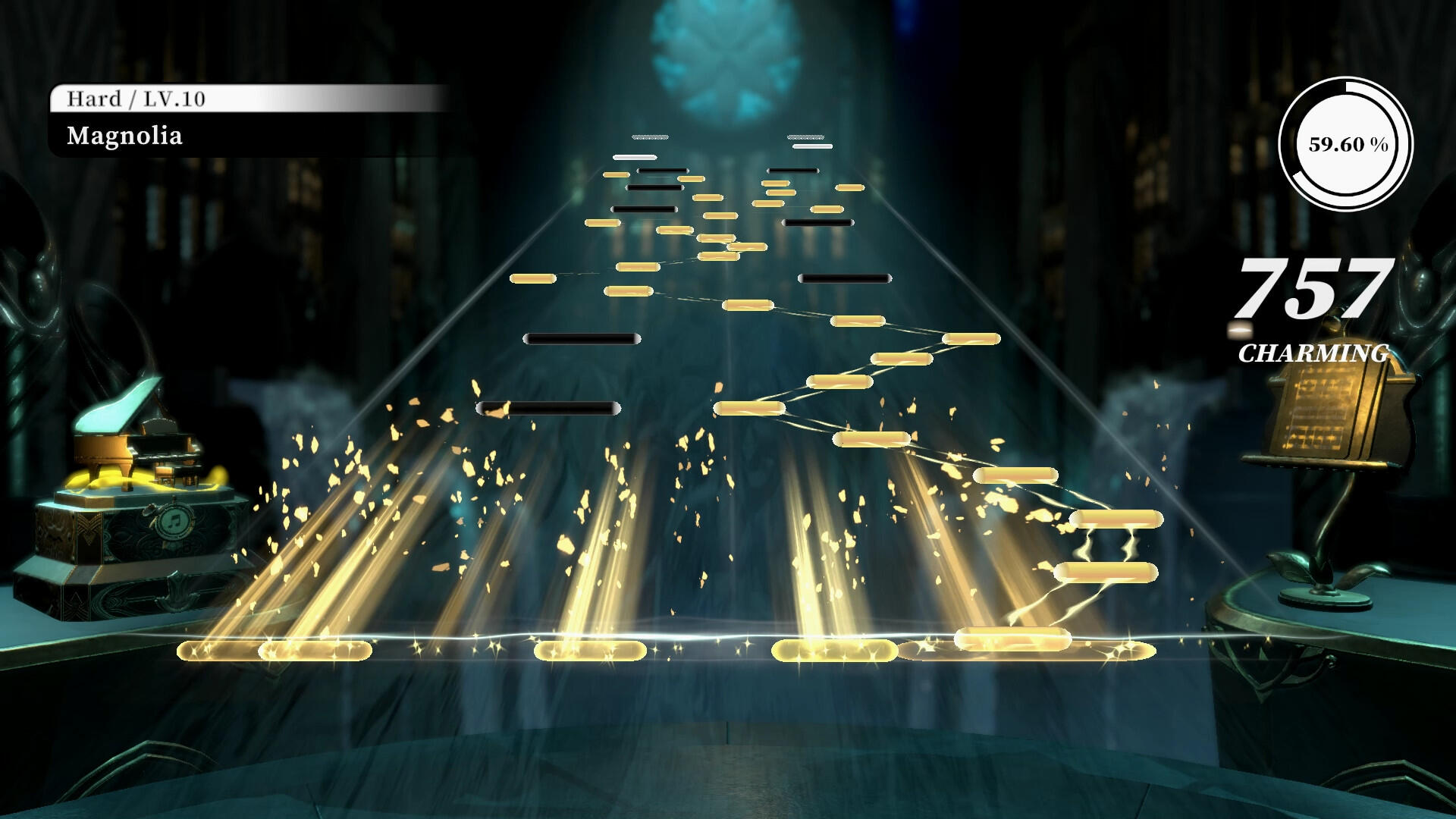
Game and Feedbacks
Manifesto, 2023
Introduction
In the world of gaming, the symbiotic relationship between feedback and game design is the heartbeat of player engagement and design innovation. “Feedback” is one of the fundamental cornerstones of gaming, yet this manifesto will assert that feedback is not merely a response mechanism; it is intricate language through which players communicate with games and engage in dialogue with developers.
Feedback as a Dynamic Tool
From a design perspective, "Feedback" emerges as a dynamic tool, enabling games to engage and communicate with players. Games rely on "feedback" to form the most essential interactive experience with players. Take video games as an example; controllers, mouses, and keyboards are ports exposed to players. The players input actions, the ports are triggered, and the character actions and camera movements in the game serve as the game responds to the player.This is the most basic mechanical feedback of the game, but it is by no means the full extent of its capabilities. Feedback is also a conduit for games to communicate with players. The camera is more than just the player's eyes; it can convey more than game graphics. In games like The Last of Us, designers use camera language extensively to create a cinematic storytelling experience. Similarly, in Bound, when players control the character in the game, the way she moves and dances, including her body language, affects the player's mood. In these examples, games utilizing visual feedback deliver messages to the players and communicate with them silently.Yet, the communication between the game and the player can gain further depth through intuitive and efficient components – interfaces. The feedback brought by the interface can be the process of revealing the card in traditional physical games, or it can be buttons and graphics in digital games. Designing buttons is exciting. They have different states like normal, hover, pressed state, etc. The designer develops different visual expressions for the various states of the buttons to provide feedback on the different stages of the user's interaction with them.Similar to buttons, the icons in the game also change visually when the player uses potions or skills, telling the player the cooling time or the effects of the skills. The feedback brought by the interface is not only a mechanical response to the player's input, but it also carries the game’s subtle information and delivers it to the player, fostering a deeper connection with them.When we designers think about game development from the standpoint of "feedback," we focus more on approaches and methods. We consider more about "how" to deliver than "what" to deliver. For instance, the unique charm of audio design in games is not limited to “when” but depends more on the usage of tonnes of sound effects to express different emotions. We employ cheerful sounds to celebrate the player's leveling up or descending melodies to render the player's frustration when they fail. In games such as Final Fantasy XIV, designers will fade in a chaotic crowd sound effect, including people talking and laughing, to better integrate the player into the game society and create a sense of immersion when there are more than a certain number of other players near the player's location.Likewise, we design choice branches for narrative, predict player activities, and provide different storylines as feedback for the player's choices. In games like Detroit: Become Human and Mass Effect series, narrative branches enrich the content and replayability of games, as well as acknowledge and respect the player’s agency. "Feedback" is the response games give to players, but it also extends beyond the surface, expressing the core gameplay and essential design intention to them through these branches.
Feedback as Critiques
A well-crafted feedback system is not just a response mechanism but a language, a dialogue between the game and the player, shaping their interaction and immersion. Yet, when this conversation falters, when the feedback is lacking or poorly designed, players notice. They feel the absence keenly, and what emerges is often a critique, a verdict that a game falls short, which, in other words, is “feedback” to the game overall.Examining games like Big Rigs: Over the Road Racing serves as an example. One of the primary reasons Big Rigs is criticized is its absence of feedback mechanisms. Essential elements like collision detection, realistic physics, and opponent AI are virtually nonexistent. Players receive no meaningful feedback about their actions, leading to a disconnected and unsatisfactory gameplay experience and, ultimately, the collapse of the game's reputation.Players are enthusiastic to evaluate and rate games through various media. Even if they don't publish authentic critical reports, they constantly generate ideas and reflections while playing the game.What's even more interesting, however, is that while players are continually providing feedback on the game, the game is also criticizing players regularly, either subtly or openly. This detailed critical evaluation operates across gaming genres, from the gentle nudges of KDA systems in shooting and MOBA games to the harsh trials of Souls-like adventures. More obviously, in rhythm games, such as Cytus and osu!, intuitive visual and auditory cues guide players, meanwhile demanding extreme precision in their every response. With each click, the game scrutinizes the player's performance, offering real-time critiques. In the process of playing a song, players often find themselves facing hundreds or even thousands of judgments from the game. It is not uncommon for players, confident in their flawless performance, to be met unanticipatedly with the game results summary report filled with “miss” and “bad,” reminding them that perfection remains a rare feat.Nevertheless, take a closer look at the design intent; beneath overt critiques lies an exchange, an unseen conversation through reviewing between game design and player experience. From a design perspective, we, as excellent game developers, craft these challenges purposefully. We understand that in the face of adversity, players discover resilience. Every missed beat and every unachieved goal becomes a stepping stone, encouraging players to persist, practice, and eventually conquer the challenge. These evaluation criteria are not arbitrary; they are carefully designed to guide, motivate, and inspire players to push their boundaries and attain mastery.
Feedback as the Bridge
At the same time, from another aspect, as players keep engaging with games, their playthroughs and feedback become the foundation upon which a bridge between developers and gamers is constructed. The player's reaction to game mechanics, their gameplay style, and their critiques form a multifaceted lens through which game designers perceive their creation.By keenly observing how players interact with the game, developers gain valuable insights into not just player preferences but also loopholes and shortcomings within the gameplay and mechanics. With this understanding, game designers can refine games further, ensuring a more satisfying and sustainable gaming experience.For example, there was a loophole in The Witcher 3: Wild Hunt that in White Orchard, players could effortlessly kill cows and get hides for gold, which had been exploited to obtain a lot of gold in a short time, destroying the game's economic system and causing players quickly lose interests of the game. To fix this, the team first added a tax collector to the game who would visit the player and ask if the player had ever engaged in the wholesale trade of rawhide in the White Orchard area as a gentle reminder. Yet, most players ignored this and still slaughtered these cows for profit. Hence, the production team later added the "Cow Guardian," a high-level monster named "Chort" would rush out from the bushes to attack the player, which is lethal for most average players. Eventually, such a solution effectively prevented players from farming gold in the game.In this case, game designers are problem solvers, with the help of the player’s feedback, identifying the most efficient and suitable method for solving the glitch. The player, in this context, became an active participant in the game's evolution, their actions and responses serving as vital influencing factors that shape the game's development trajectory.As game designers, we thoroughly playtest our games and value player feedback before release. Equally important is our continuous scrutiny of how players engage with game mechanics and experience gameplay during widespread play. It's crucial to actively seek player input, adapt dynamically, and closely observe their responses. Above all, never underestimate the intelligence and creativity of your player base.In essence, players, as they dive deeper into the game, co-create the game world with game designers, infusing it with their originality, emotions, and unique interpretations. The feedback loop intertwined between players, games, and game designers extends beyond technical aspects and involves more emotional engagement and imaginative exploration. Therefore, “feedback” constructs a two-way bridge between players and game developers and paints a vivid picture of collaboration, where developers and players weave intricate stories, crafting not just games but shared experiences.
Special Thanks to:Miaka Lee, for assisting me in brainstorming.Chapin Boyer, for ongoing suggestions and guidance.
Links:Manifesto
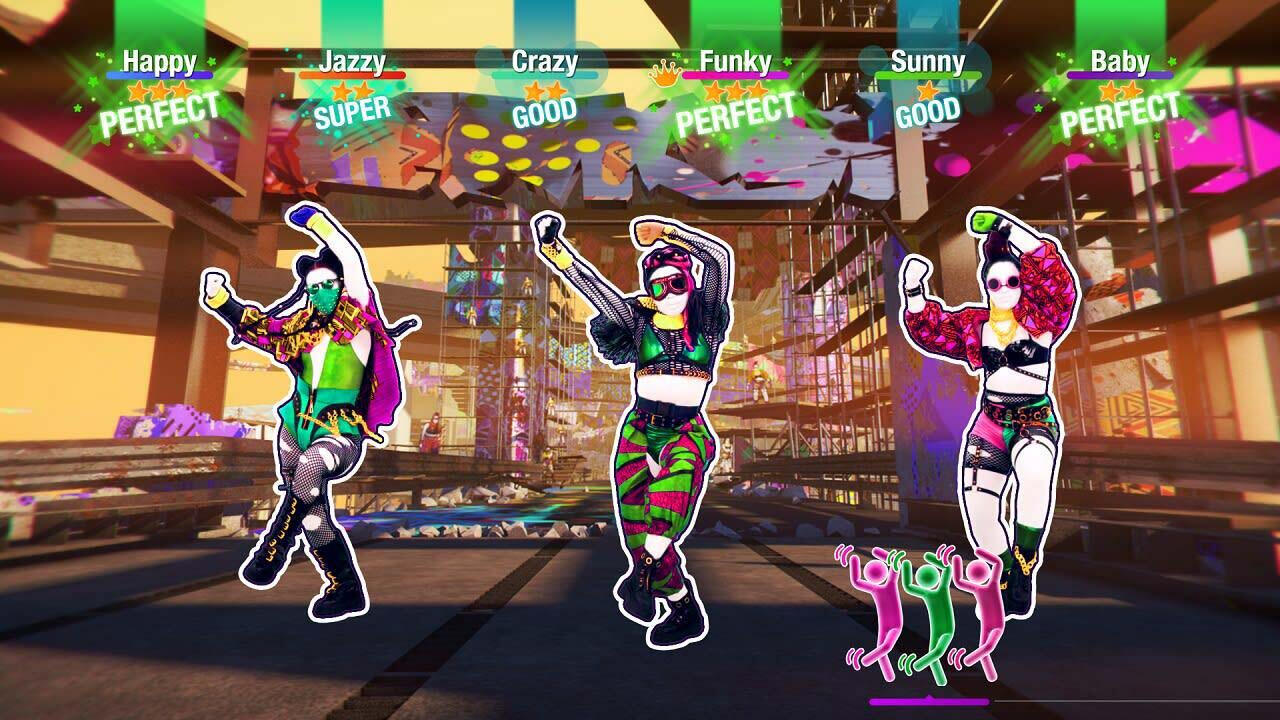
Dance, Gaming, and Narrative
Critical Play Report, 2023
Within the realm of gaming, an intriguing convergence unfolds at the intersection of performance and expression when discussing games and dance.The marriage of dance and games is not a new concept. Dating back to 1998, games like Bust A Groove introduced the idea of controlling characters to dance through button presses, rhythm, and on-screen arrow cues. Yet, at this point, these interactions were limited to finger movements, creating a gameplay experience reminiscent of traditional button-mashing mechanics rather than genuine dance. However, during the same era, the evolution of dance games like Dance Dance Revolution marked a significant shift. Players were encouraged to engage physically by incorporating bodily movements.Just Dance, a later addition to the genre, revolutionized the experience by utilizing motion controllers to capture players' movements. From my personal experience, it provided a refreshing experience not only due to its novel method of motion capture but also because it discarded the "classic" abstract visual cues of arrows in favor of concrete video guidance, which provides a more "natural" dance experience akin to following a personal coach. From a design standpoint, Just Dance was crafted for “amateur dancers” to experience dancing with less burden. Players were spared the frustration of missteps as their figures and movements were not visible in the game. This absence of visual feedback enhanced players' confidence, allowing them to focus more on the music and the act of dancing. At the same time, unlike professional dancing, which demands breaking down and memorizing complicated moves, the game employed video and symbol guidance, enabling players to dive into the dance swiftly and effortlessly.However, there was a downside. Just Dance's scoring system, a typical gaming feature, affects and overshadows the player's dance experience to a certain extent. In the movie Ready Player One, Parzival's initial reaction upon entering the gravity-free dance floor, "I don't think this is it, no scoreboard, no obstacles," echoed traditional gaming expectations. Just Dance, unfortunately, did not break away from such expectations. Implementing motion capture and movement evaluation added a competitive edge, shifting players' attention toward the game's scoring. Moreover, a mistake or a misjudgment by the controller's sensor could induce panic, disrupting the dance rhythm and spoiling the overall experience. True dance, in my perspective, entails engaging the entire body, not just hands. Therefore, I find myself more drawn to the controller-free experience, which allows me to immerse myself entirely in the music, connect with my inner rhythm, commit myself to the dance, and feel more “expressive.”In essence, Just Dance prioritizes "dance," utilizing "games" as a medium. Conversely, several other games emphasize "games," incorporating "dance" as an element or mechanism. For instance, in Bound, the protagonist's balletic movements create a unique visual presentation and express a feeling of the character inside the game performing for the player, the audience beyond the screen. Yet, my disappointment and regret arose when the dance element in Bound remained detached from its deeply moving narrative. In my belief, dance is more powerful than an external appearance. Dance possesses an inherent storytelling power. Music and dance, intertwined, own the ability to influence moods and emotions, forming a compelling narrative. In films such as Singin' in the Rain, taking the iconic scene featuring Don Lockwood's performance in the rain as an example, music and dance seamlessly blend into the narrative, conveying the character’s overwhelming joy as he embraces his true love and evoking profound emotions in viewers.Regrettably, my search for games seamless interplaying with music, dance, and narrative led to sparse findings. Most games treat "dance" as a social or mechanical element while overlooking its potential as a narrative technique. One imperfect exception is Beauvoir, the diva character in NieR Automata. Beauvior has her own musical theme within the game. When engaging in battle with her, she moves and acts like an opera performer and attacks following the rhythm of her music. During the battle, the player will gradually uncover her life stories. Nevertheless, these narratives are presented through cutscenes and dialogues rather than being integrated into gameplay interactions.
Links:Critical Play Report
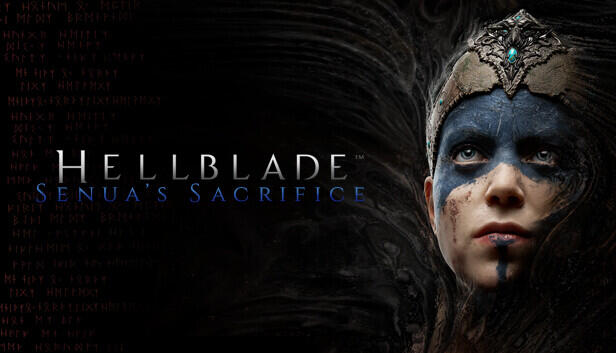
Disability Studies, Mental Health, and Games
Critical Play Report, 2023
In the paper by Dunlap, K. & Kowert, R., they introduced the concept of the multidimensional expression of mental illness in games, which includes the 2D portrayal, described as a defining element, often used to explain a character's behavior or backstory; and the 3D portrayal, fully realized and an essential component that reflects authentic experiences. In my view, the 2D portrayal leans towards using mental issues as a means to narrate another theme. This reminds me of the mystery movies that use dissociative identity disorder as the core of the puzzle to engage the audience and reveal the answer at the end. Yet, the essential idea of these movies is usually not to discuss mental issues itself.In a medium like games, due to its unique interactivity and ability to deliver engaging experiences, it appears to have more potential to utilize 3D expression, immerse players in the journey of being a patient, and engage in more serious discussions about mental health itself. Hellblade: Senua's Sacrifice seems to fulfill this expectation. The game's use of Binaural Audio technology mimics the paracusia, and the level design simulates hallucinations, which are both common symptoms in individuals with schizophrenia. Simultaneously, through its narrative, the game tells the story of a “patient” with mental illness seeking self-acceptance. However, from my perspective, expressing mental health subjects through games is highly challenging, and game design inherently has limitations in such creative endeavors.From a design standpoint, I believe the most crucial questions are "why" and "who." What is the purpose of introducing mental illness into games? And who is our audience? Mental health issues are extremely complex, and people's mental states are not binary. If we consider mental states as a parameter, where 0 represents complete health, and 10 represents severe illness, I believe the majority fall somewhere in between. When we design a game aiming to simulate symptoms of an illness, to educate those closer to 0 on this parameter about mental illness, and to draw their attention, we face the challenge of balancing accuracy with entertainment value. While games can simulate certain symptoms or experiences associated with mental illness, accurately capturing the full complexity and reality of these conditions is difficult. Games like Hellblade: Senua's Sacrifice often receive acclaim for their attempt to depict mental health issues authentically. Yet, even in such games, the experiences depicted do not represent the entirety of schizophrenia accurately, such as bypassing the disorganized thinking commonly associated with schizophrenia, due to the constraints of gameplay mechanics and narrative pacing. Game developers created a character, but this character's traits cannot represent all aspects of the illness. Meanwhile, faced with such challenges, we opted to simplify and systemize the concept of mental illness in games, leading to another problem: we've missed some depth and scope. Mental issues encompass a wide array; even within anxiety disorders alone, there are generalized anxiety disorders, social anxiety disorders, separation anxiety disorders, etc. Their symptoms vary widely, and their causes are diverse. They cannot be simply categorized as merely fearing "being harmed," "being unloved," or "being a bad person," as portrayed in the game Adventures With Anxiety. As a result, games of this nature may not be comprehensive in an educational context.When we shift our focus to those closer to the 10 end of the parameter, intending to make them feel understood and cared for, we seem to easily overlook individual uniqueness. Every person dealing with a mental health condition has a different situation. Not only do their symptoms differ, but more importantly, they come from different backgrounds and have different causes for their conditions. In other words, when it comes to “understanding” and “care,” they have different needs. At the end of Hellblade: Senua's Sacrifice, the voice says, “Never forget what it is like to see the world as a child.“ Perhaps for many, childhood represents the most innocent and beautiful times. However, as someone with childhood trauma, hearing that statement did not evoke relief but rather my unbearable memories.Admittedly, a single game cannot encompass all aspects of such a complex topic as mental illness. However, I still anticipate more games designed with the theme of mental health, whether as medical models to arouse individual players’ awareness or as social models fostering a more inclusive understanding of mental illness within our broader community. The coverage of a single game is limited, but when enough games exist, as long as one game can touch, inspire, or even change someone's perspective on mental health, then its existence holds significant meaning.
Reference:Dunlap, K., & Kowert, R. (2021). Mental Health in 3D: A Dimensional Model of Mental Illness Representation in Digital Games. Loading, 14(24), 122–133.
https://doi.org/10.7202/1084842ar
Links:Critical Play Report

Incremental Games
Critical Play Report, 2023
Incremental Games, a unique game genre, are often overlooked in game design discussions but hold substantial market influence. More importantly, it can bring us deeper consideration about game development.Incremental games represent a distinct gaming category, standing apart from most other games. As Mr. King highlighted, the gameplay and mechanics of incremental games maintain an "extremely minimalistic" design. A simple input—just a click—and an even simpler feedback—representing an increase of 1 in resources—that's it. In some mid-to-late game stages, resources within the game auto-generate, transforming the player's click from producing 1 resource to making 1 decision. Still, the gameplay only requires this simple click from the player. However, it's this most minimalist game design that often ensnares players, leading them through countless sleepless nights.Why? Why are incremental games so appealing, even addictive? In my view, it's because these games, through the simplest means, the most straightforward game logic, precisely tap into human nature. The operation in incremental games merely requires one click, which is extremely simple and accessible. Regardless of who the player is, their educational background, life experiences, or even whether they comprehend the textual instructions in the game, as long as they understand that the button is "pressable" (which, I believe most people cannot resist—a sleek, slightly 3D-ish button), and they press it, something appears or increases, and they've already stepped into the game. This immediate feedback aligns perfectly with human nature. We humans enjoy seeing our efforts acknowledged and relish feedback for our endeavors. In such games, with minimal effort, players receive a "seemingly decent" reward. In Universal Paperclips, I clicked a button, and a paperclip was manufactured. I received a "reward," even if this reward is merely a concept, something "illusory," not existing in real life. Yet, my brain tells me, "Hey, you changed something; see this number change? It's bigger now!"From a design perspective, in games like Universal Paperclips, the game deliberately avoids friction. It doesn't ask you to craft iron wires or bend an actual wire. From nothing to something, the designer streamlined all the steps and "reduced dimensions" of all intermediate processes. Perhaps you can see the length of your wire, but all you need to do is click, and then a paperclip, conceptually, is born. You've created something, so you receive some joy and satisfaction. Human nature tends toward simplicity and relishes making minimal efforts for decent rewards—much like how most of us have, to some extent, thought about finding a job that demands less but pays well.When these tiny paperclips come together to form a larger picture—a narrative— the game ascends to another level. It's not just about the narrative being an "added reward"; more crucially, all the paperclips now have "meaning." Players aren't only making paperclips but engaging in a story through this means. With Universal Paperclips, players break through repeatedly, propelling the game to the next stage and advancing the narrative to the next chapter, and as a result, they find greater satisfaction. Is this satisfaction fake? Perhaps, because these "achievements" are only conceptual, they don't really exist.But what is real? Must everything be serious? Is all joy without meaning a kind of vice? Or, is it that sometimes life doesn't need to be "meaningful"?In my view, for game designers, creating a game for storytelling, expressing a quirky point, or an absurd idea is enough. I've expressed myself and influenced others—that's meaningful. Even if my game is a joke, seeing the audience's reactions—whether they laugh loudly or furrow their brows in confusion—elicits a response to my work, and that's the most significant meaning for me. Because I've accomplished something, impacted some people, and added a bit of "me" to this world.As for players, in their brain-less moments, repeatedly clicking, observing the numbers on the screen grow larger, watching a more bizarre story unfold, maybe they're stealing a moment in their busy lives, taking a breath, or embracing a period of relaxing. As long as they enjoy their time playing, these incremental games hold meaning. Most of us are already busy enough, and educated extensively—human bodies need rest, and so do human minds and hearts.Perhaps to serious individuals, such games seem like a waste of time, but if the players are finding respite, and pleasure, then it's not a waste. Incremental games are a peculiar presence; they remind us that being not-serious is fine, and having fun is not a sin.
Links:Critical Play Report

Games and Spectatorship
Critical Play Report, 2023
When talking about the theme of "Games and Spectatorship," it took us into the more peripheral aspects of "games" — focusing more on the behavior of the game's audience, or in other words, the cultural impact brought about by games, rather than just the games themselves.When audiences watch game livestreams and competitions, what are they really enjoying? Why do they enjoy watching? I've heard various responses like "It looks cool" or "I like watching the competition," but from my perspective, one of the reasons why esports is referred to as a "sport" is due to its audience having a similar viewing experience to traditional sports matches. People enjoy watching soccer matches for many reasons, and one of the most significant reasons is the sense of belonging and identification. Esports spectators feel the same way. In such an environment, the communal atmosphere often nudges you to develop a bias towards the team you support. When you support the same team as those around you, it creates a strong sense of collective identity and belonging. You understand that you're part of a group; your comrades may come from different backgrounds and have diverse experiences, but they've made the same choice as you. They understand and embrace you, and together, you share a common goal – supporting your mutual choice.Furthermore, when people support a team in competitive matches, they often project their ego onto the competitors and the team itself. Psychologist Robert Beno Cialdini introduced the theory of Basking in Reflected Glory, a self-serving cognitive process where an individual associates themselves with successful others in a way that the winner's success becomes the individual's own achievement. This psychological phenomenon leads us to seek an enhancement of our self-esteem, intertwining our sense of self-identity with the victory and glory of the collective we've chosen. Even though our impact on the match beyond cheering is minimal, we still perceive the team's triumph as equivalent to our own success.Moving beyond esports, there are some dynamic shifts within game live streaming. Even though it's all about streaming games, each streamer possesses a unique personality. This diversity adds more influencing factors and answers to the question of "Why do people enjoy watching." When a streamer showcases exceptional skills and prowess in the game, we appreciate their impressive performances. However, there are also streamers whose technical abilities might be average—or even poor—yet they gather a substantial audience due to their distinctive personalities. Some employ clumsy maneuvers that are comically entertaining, while others exaggerate expressions and actions when things go awry. Overall, even if their streams lack technical brilliance, they are by no means lacking in entertainment value. This kind of lively and entertaining broadcast, filled with theatrics, attracts a specific audience seeking amusement and entertainment. Thus, for this segment of the game live stream spectators, when the streamer wins, it brings them joy, yet even in defeat, they can witness the streamer's humorous reactions. "They" never lose anything; regardless of the game's outcome—win or lose—these spectators derive pleasure and fulfillment from the experience.Watching others playing is intriguing, yet ultimately, it's an indirect experience of games. This prompts contemplation on another question: "Why watch instead of play?" I believe the statement attributed to Martin Seel – "By watching sports, we can enjoy, in our imagination, certain lives that we have neither the talent nor the time to live," offers a compelling answer. We all live within various constraints, and spectating games provides one solution to breaking through these limitations. Perhaps we lack the innate talent or have limited time to hone specific skills, yet by supporting esports teams and projecting ourselves onto them, we compensate for our deficiencies to some extent. Maybe we lack the appropriate equipment or the energy to invest ourselves entirely in gaming, and so, live streaming grants us an almost firsthand window into experiencing gaming content. Alternatively, we might be constrained by human inertia, simply enjoying this entertainment mode that provides enjoyment without personally exerting effort.Regardless, spectatorship forms an integral part of gaming culture. It stands as evidence of our love and passion for games and demonstrates the diverse ways in which we engage with and appreciate them.
